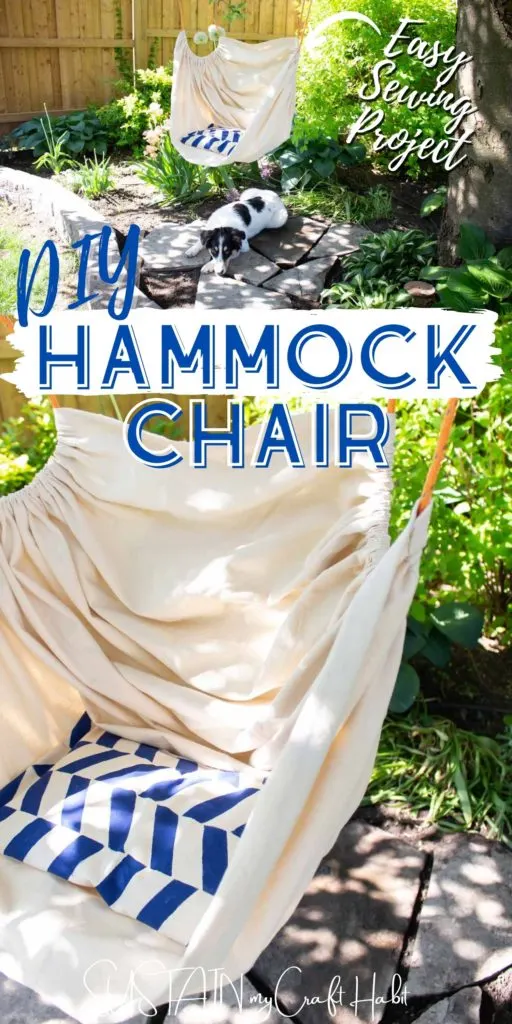Are you looking for the perfect addition for your backyard oasis? Ideal for any outdoor setting, create your own personal sanctuary with a cozy and practical DIY hammock chair project. With just a few supplies such as canvas fabric, rope and a strong wooden dowel, you can create an ultimate relazation nook for outdoors or in!
This post is sponsored by Canvas Etc. All opinions are our own.
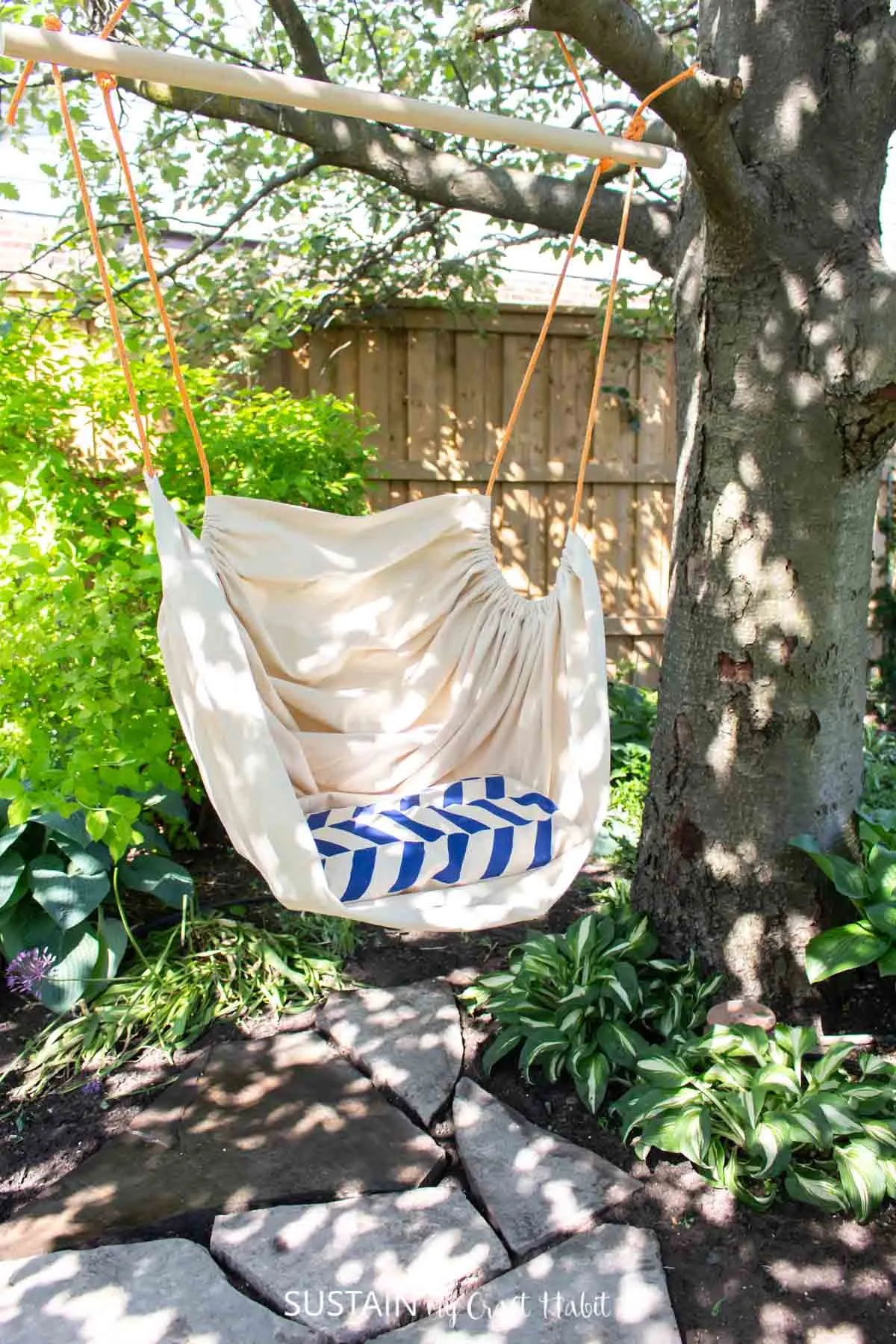
Easy to Make DIY Hammock Chair
We’re once again partnering with Canvas Etc. to make this DIY hammock chair, a simple sewing project using one of their durable medium weight cotton canvas fabric. Gratefully, I have one large, mature tree in my backyard that gives us the coolest shaded spot for hot Summer days. I thought this was the perfect, cozy spot for hanging a hammock chair underneath!
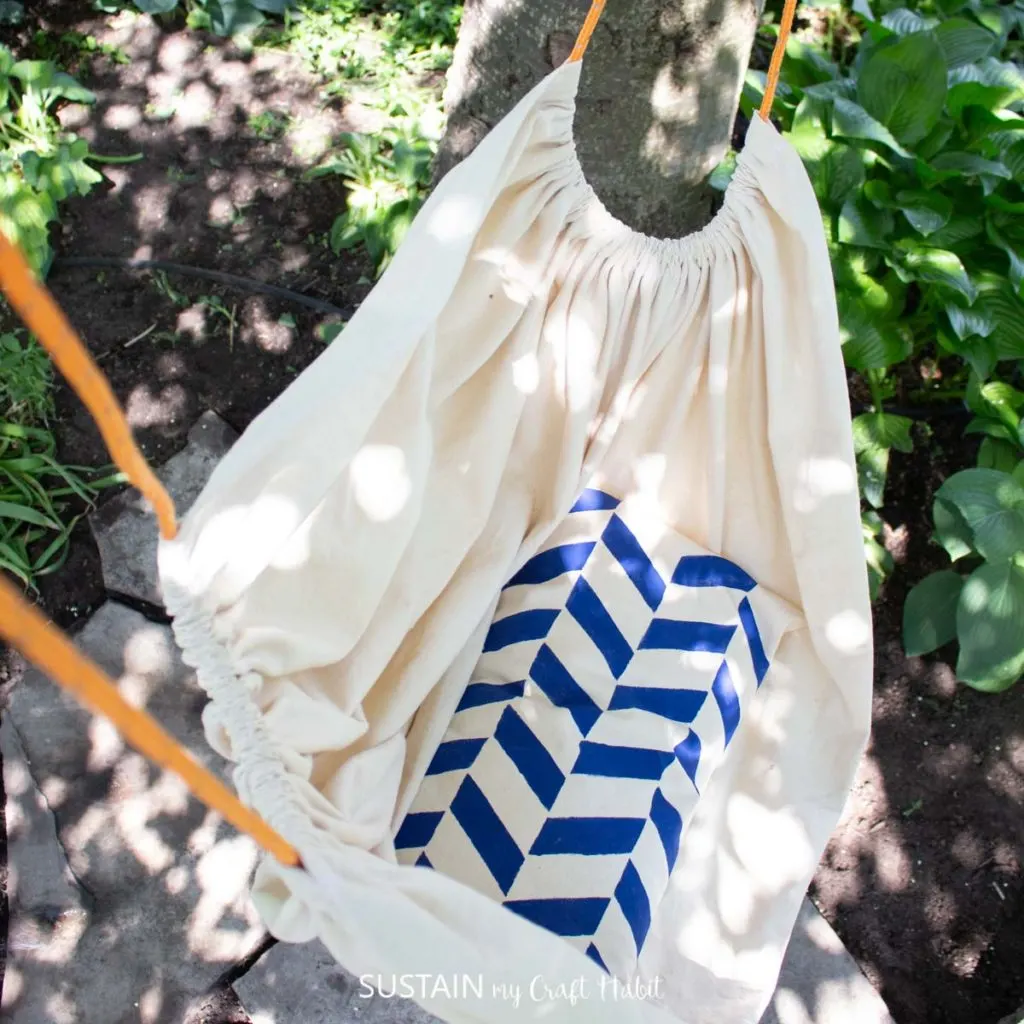
Since I used a long chain with a couple of quick links for hooking the canvas hammock on to, I’m able to remove the chair easily if I want or need. If rain is in the forecast, I plan to take the hammock down to store in a dry place.
For this chair, I used a ¼” thick braided polypropylene rope as it’s all I had at home at the time but I suggest using a thicker rope, ⅜” thickness instead for more strength. The thicker polypropylene has a working load of 244 lbs so it could support an adult unlike the ¼” thickness which only supports up to 157 lbs.
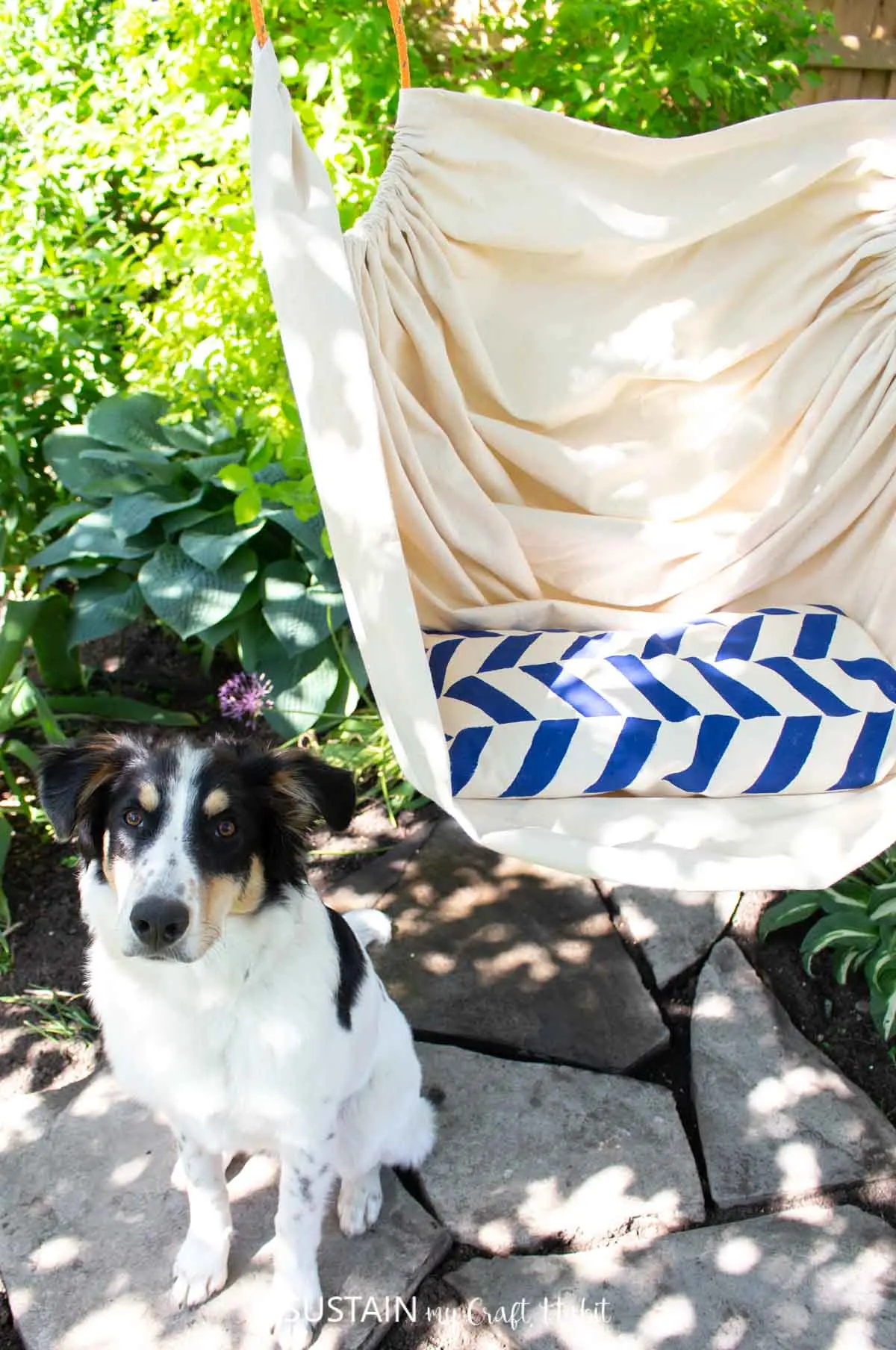
Our Ollie was all set to just right into the new hammock chair. I did however decide to sew him his very own cozy space with a DIY dog bed instead :).
Materials Needed:
Disclosure: This post continues affiliate links for your shopping convenience. You can find our full disclosure policy here.
- 2 yards of 100% Cotton canvas, 10oz, 60” wide, in natural color
- Hardwood dowel, 1 ¼” wide x 3’ long (such as oak)
- Braided Polypropylene, ⅜” thick x 18’ long, any color (with 244 lb working load limit)
- 2”x3/16” Stainless Steel Spring Loaded Security Snap
- 2”x3/16” Stainless Steel Quick Link with 3/16” zinc plated passing link chain (with 450 lb safe work load)
- Drill Press and drill bit, 3/8”
- Sewing machine and matching thread, pins
- Iron and ironing board
- Fabric Scissors
- Measuring Tape, Ruler/ Yardstick, chalk or wax
- Large safety pin
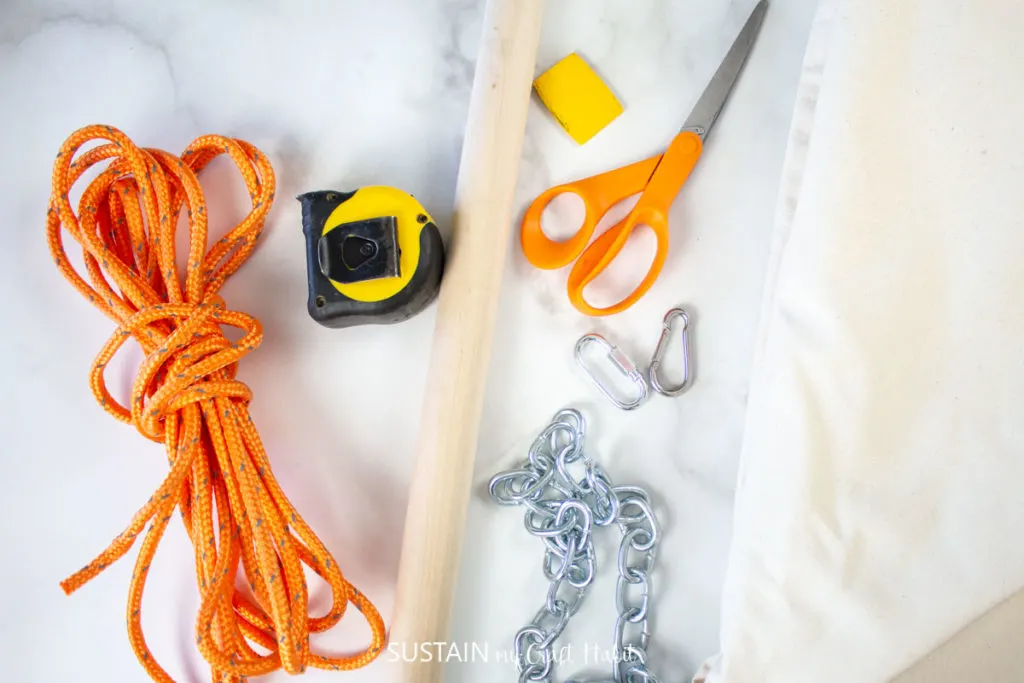
For seat cushion (optional):
- 10×14” pillow form
- Fabric paint, any color and paintbrush
- ZigZag Stencil
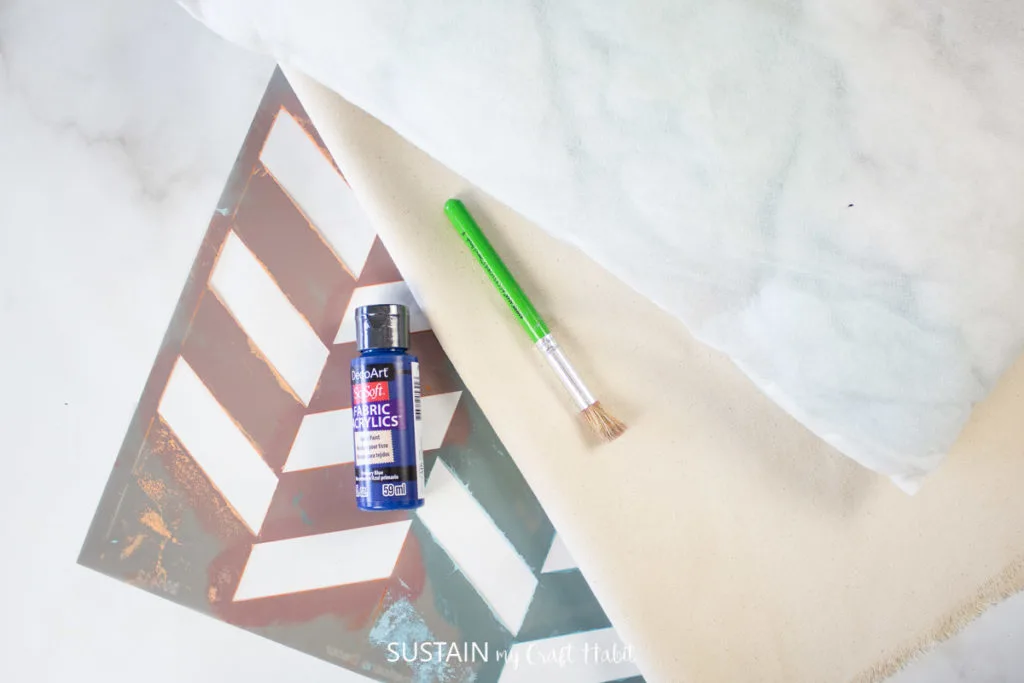
Step by Step Instructions for Making a Hammock Chair:
Preparing the Wooden Dowel
Measure and mark 2” and 4” from both ends.
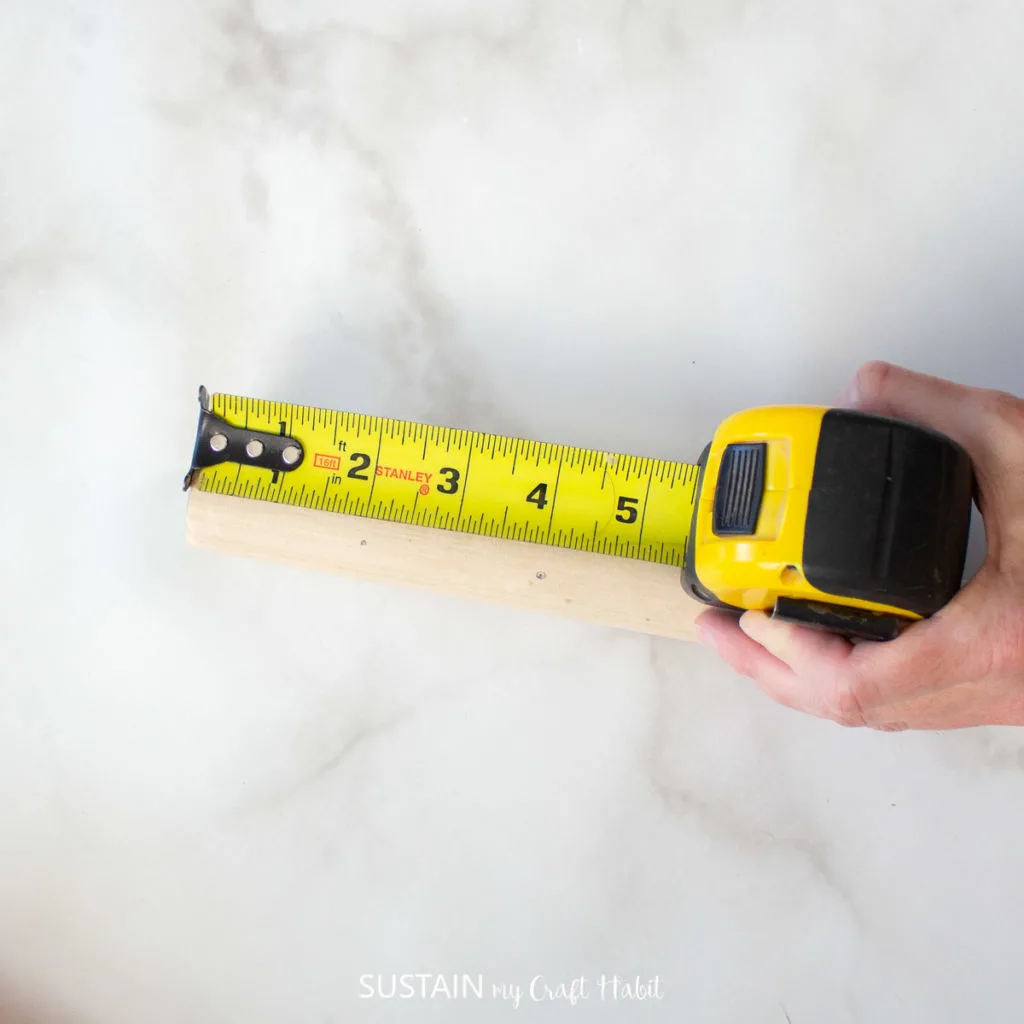
Using a drill press, drill a ⅜” hole through the dowel at the marked spots and then sand any rough edges of you have them.
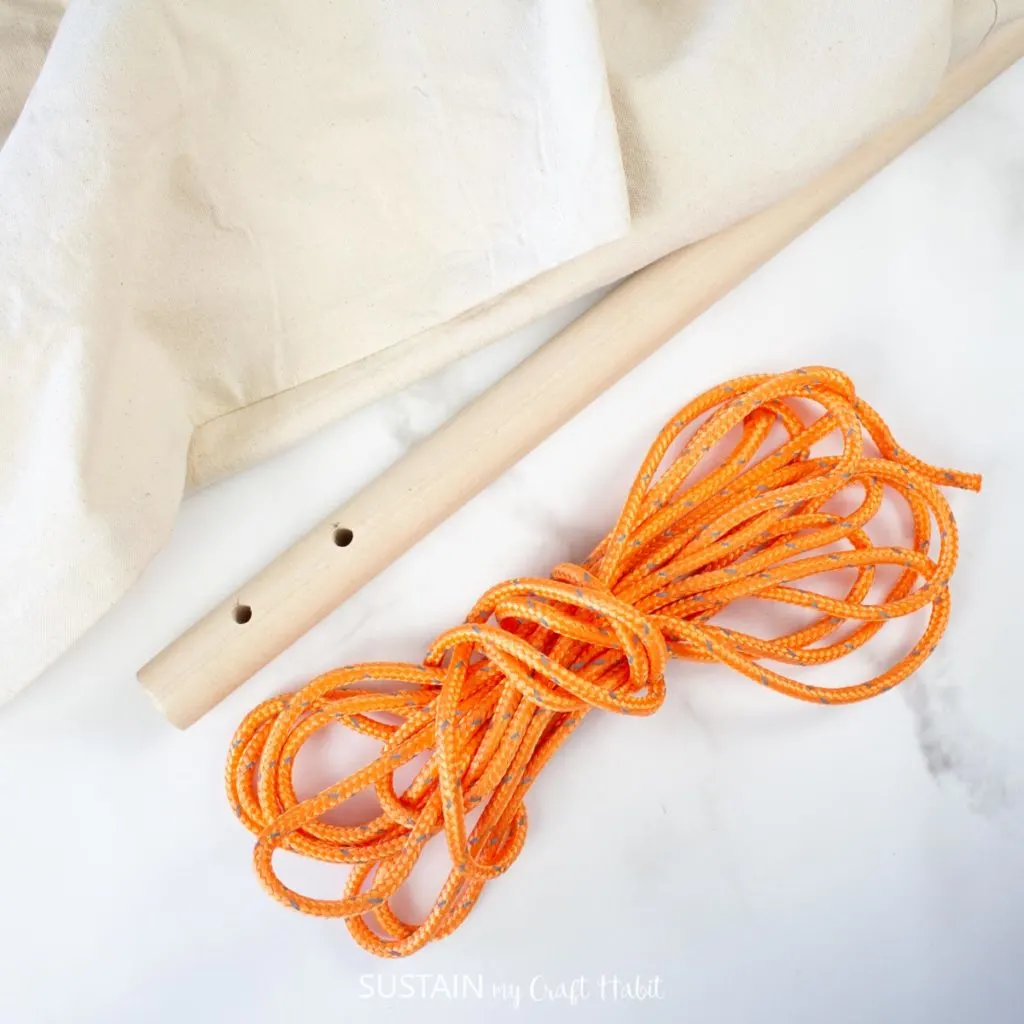
If you plan to keep your hammock chair outside, then I suggest adding an outdoor weather sealer to the wood dowel.
Preparing the Canvas Fabric
Fold the canvas fabric in half with selvage edges aligned. On one end of the fabric, measure and mark 13” from the folded edge. And then on the other end, measure and mark 28” from the folded edge.
Using a long yardstick, draw a line using chalk or removable wax connecting the marked spots. Cut along the marked line to create a trapezoid shape when fabric is unfolded.
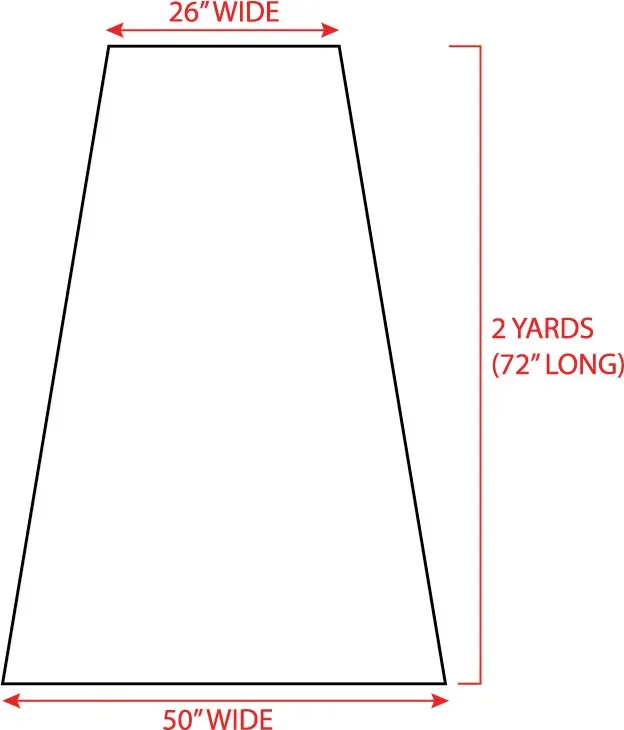
Finish the straight edges of the cut fabric (the short side is the top and the long end is the bottom of the hammock chair). Fold edges in 1/2” and press. Fold again another 1/2” and press, then stitch the hem in place. Be sure to backstitch at the start and end of all your stitching.
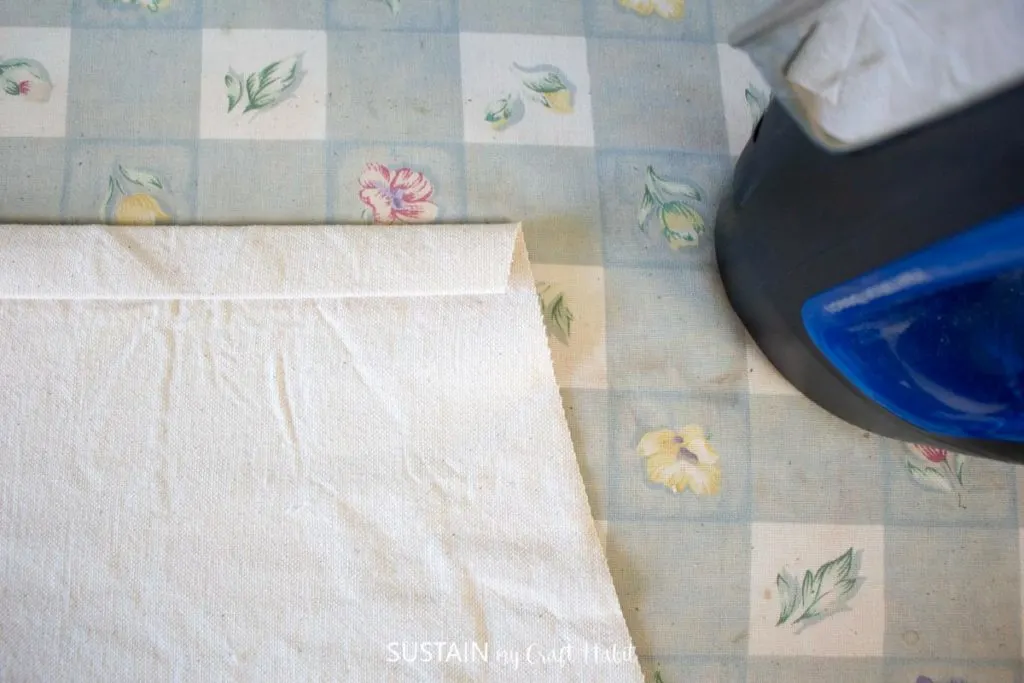
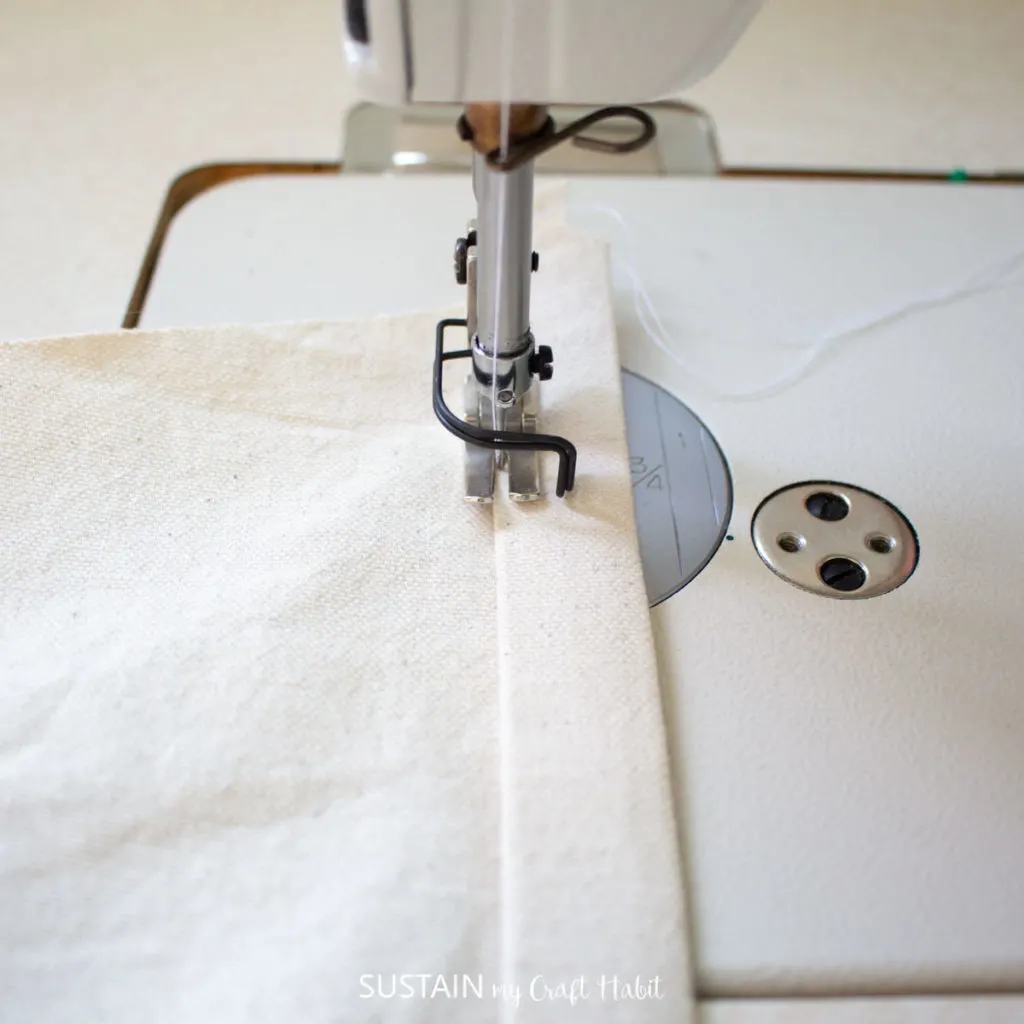
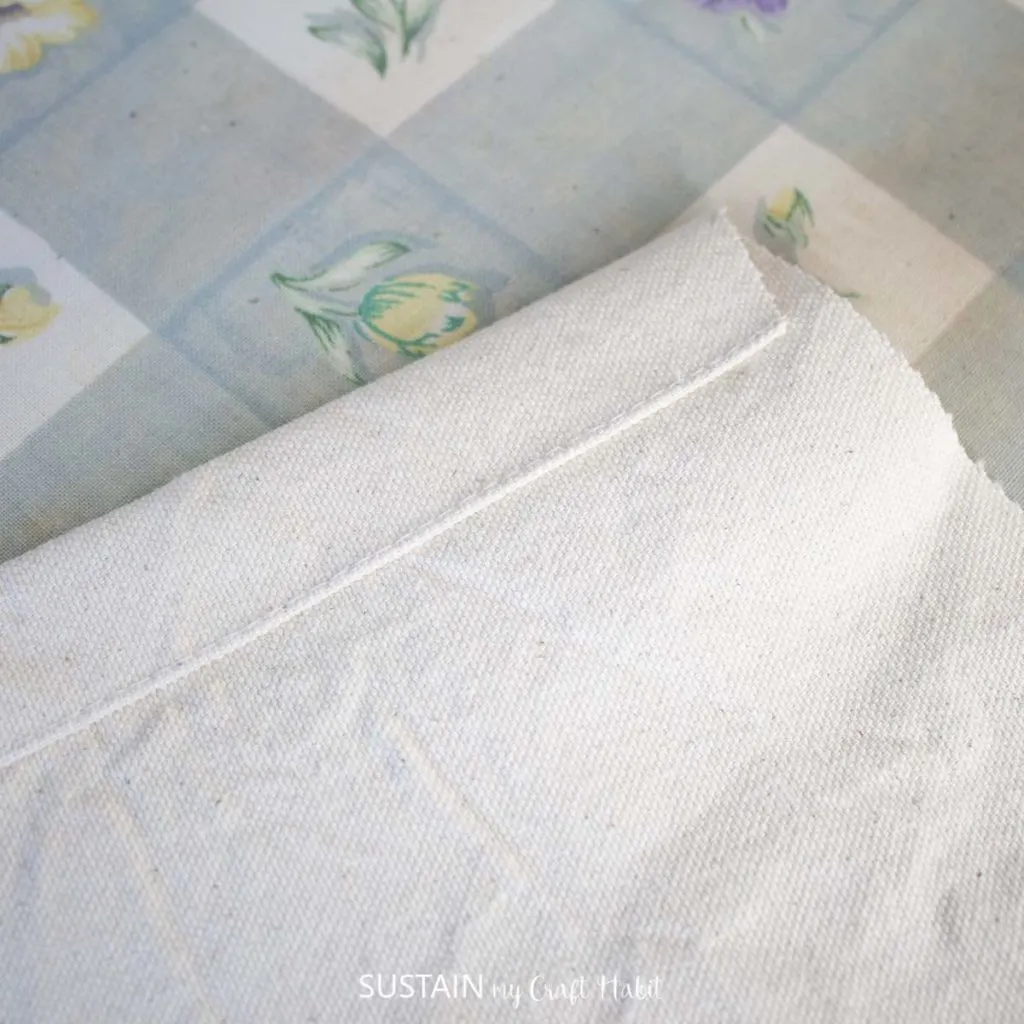
Along the diagonal cut lines, fold edges in ½” and press. Fold again another 1 1/8” and press. Pin along the folds to hold in place while sewing. Tuck in the extra bulk on the ends where the edges don’t align.
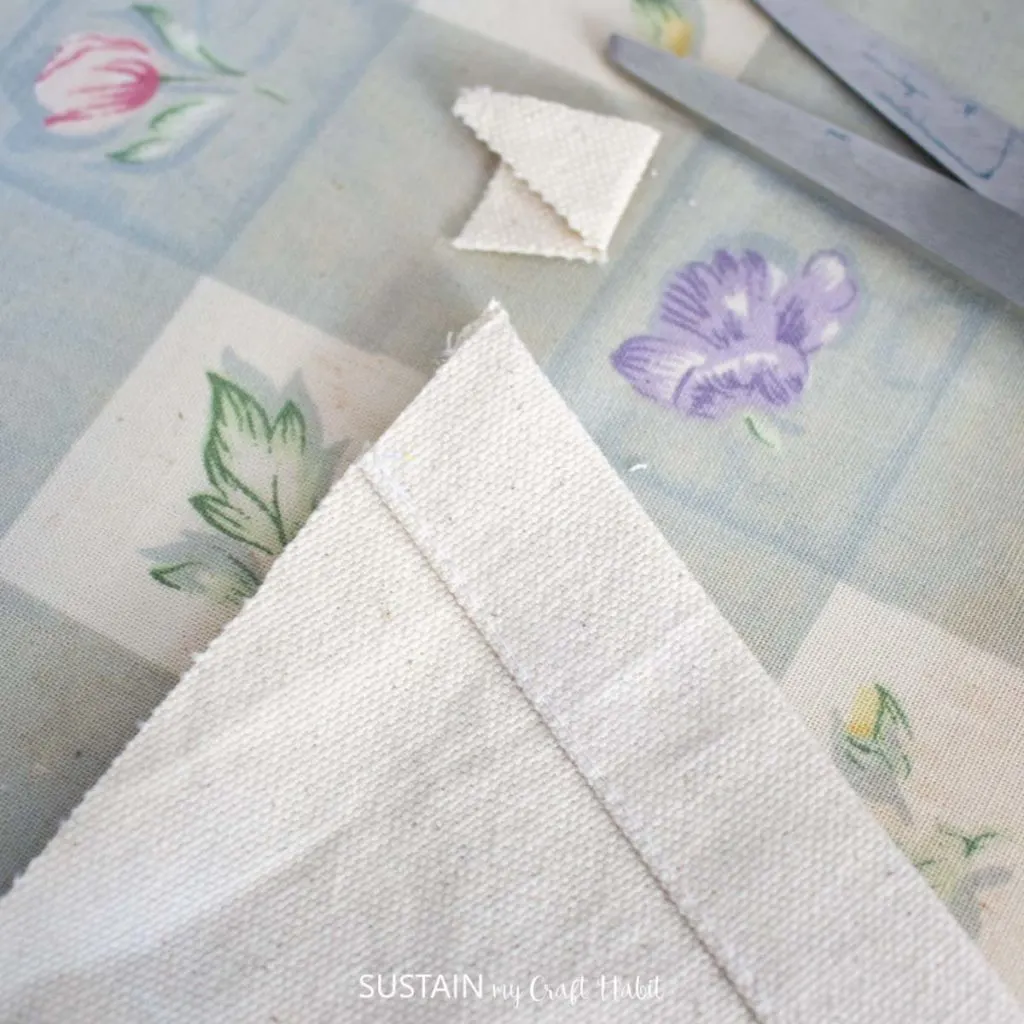
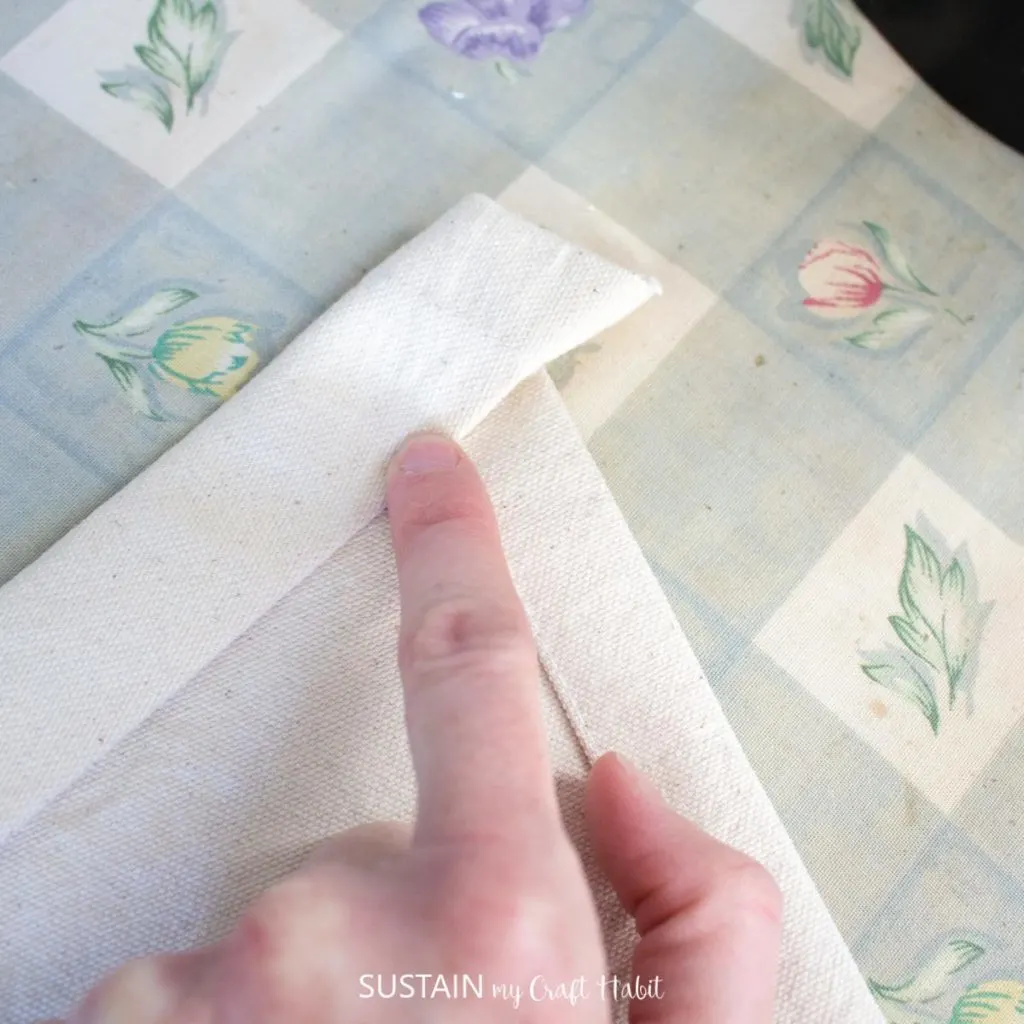
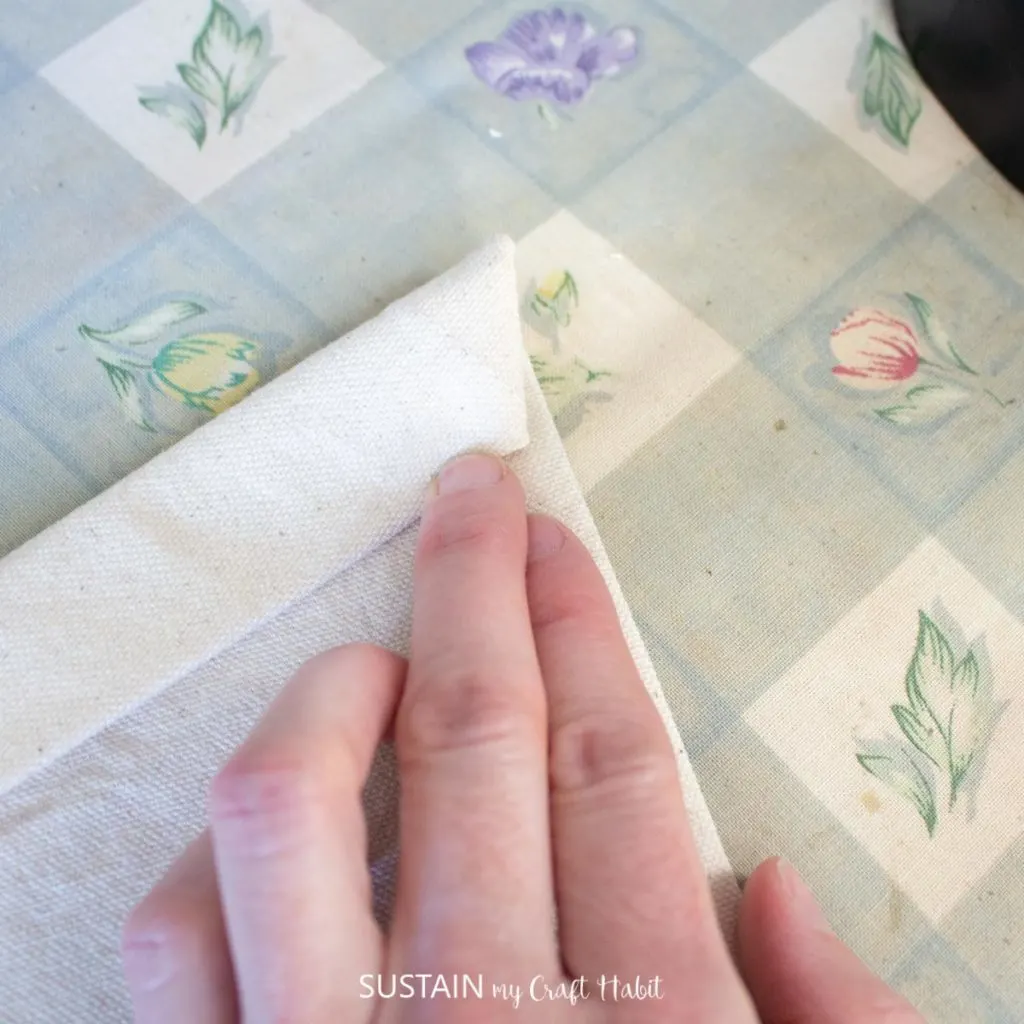
Stitch the hem in place forming a wide channel for the rope to be threaded through.
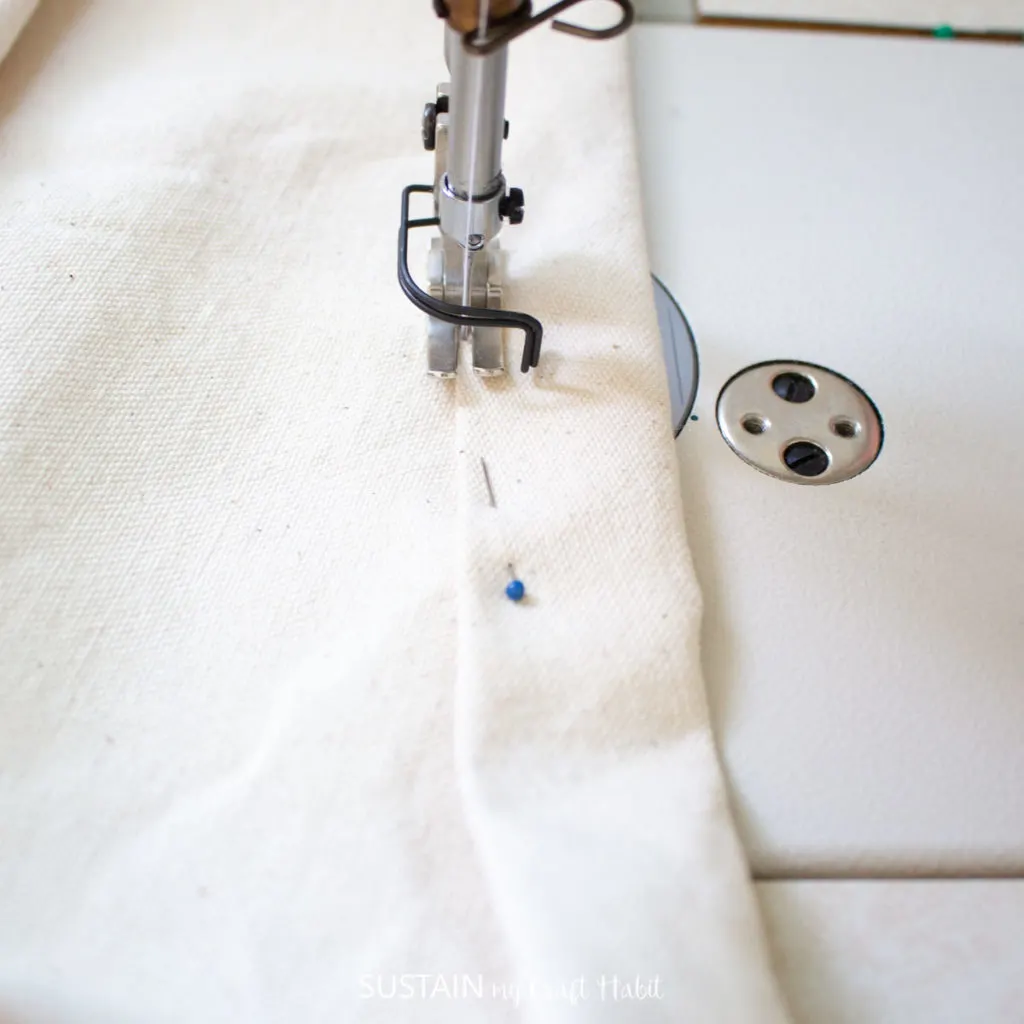
Add an extra triangular stitch at all 4 corners for added strength.
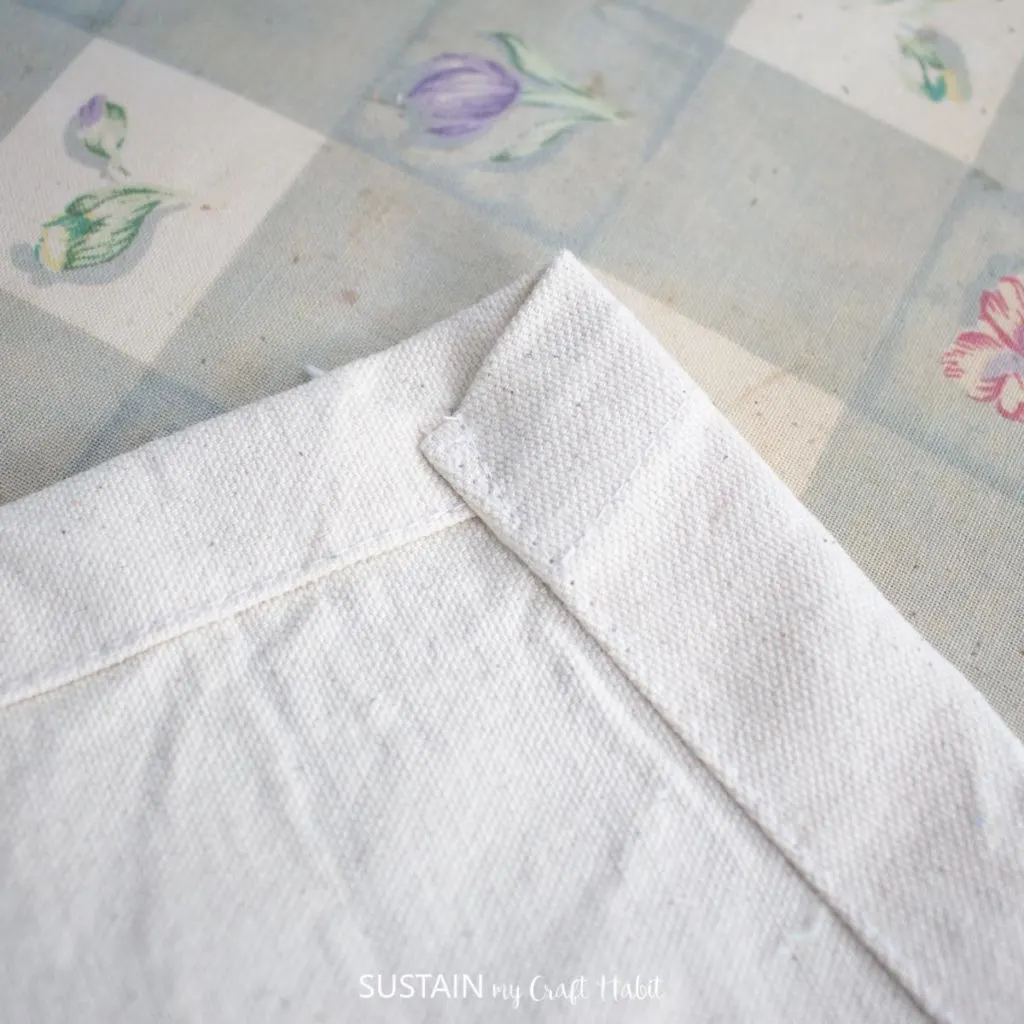
Making a seat cushion (optional)
To cover a pillow form that measures 10”x14” in size, cut a piece of canvas that measures 12”x16”.
Fabric paint is a great way to add a fun pop of color to the hammock. Using a patterned stencil, I added a zigzag pattern to the canvas. I used this same stencil for my canvas table runner but this time I didn’t need to add a fabric medium to the acrylic paint. Let the paint dry before moving on.
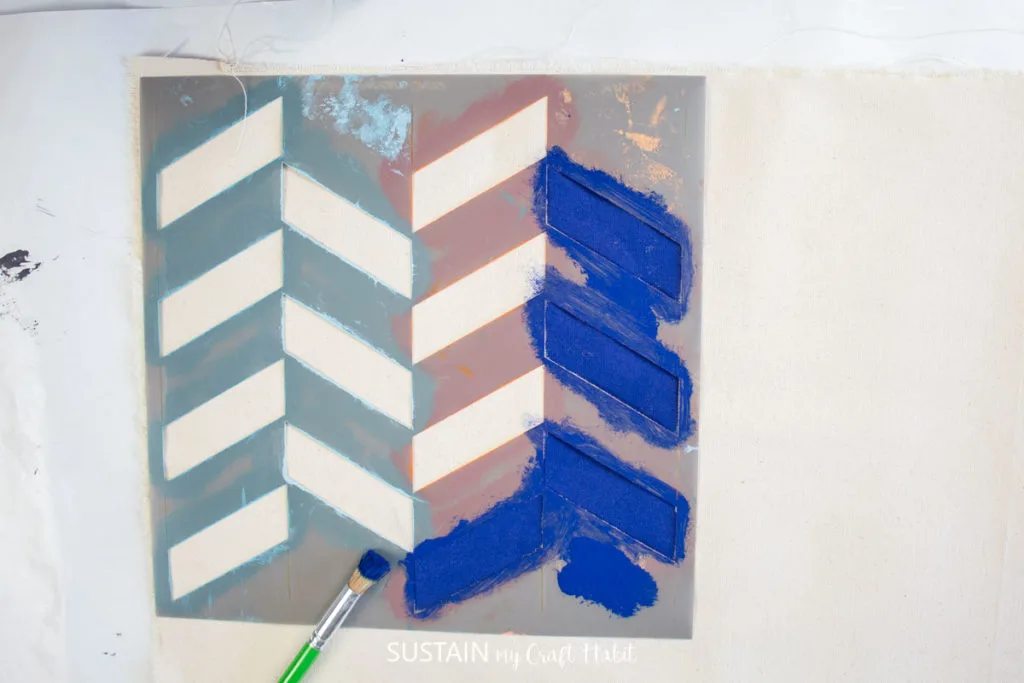
Once dry, fold the rectangle in half lengthwise with RIGHT sides together and stitch the short ends together. Stitch the long end together as well leaving an 8″ gap opening at the back. Turn the pillowcase right side out and insert the pillow form. Stitch the opening close.
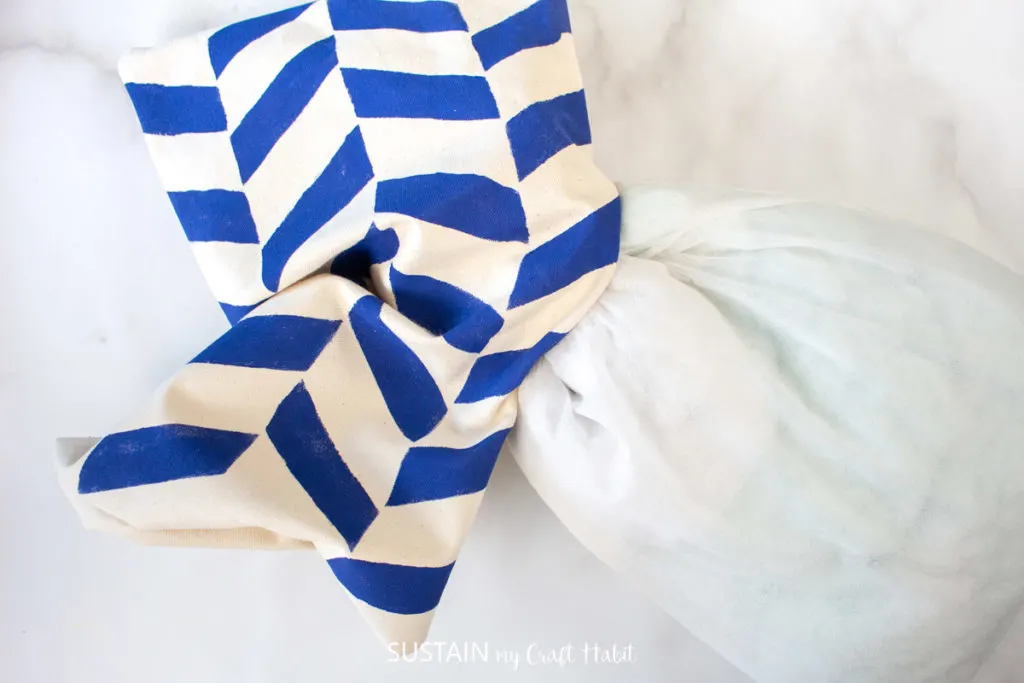
Assembling the Hammock Chair
Cut the rope to 18’ long. To prevent rope from fraying, wrap some packing tape around the ends to make it easier to thread through the holes.
Fold the rope in half and tie a large knot 5” from the fold creating a large loop for hanging.
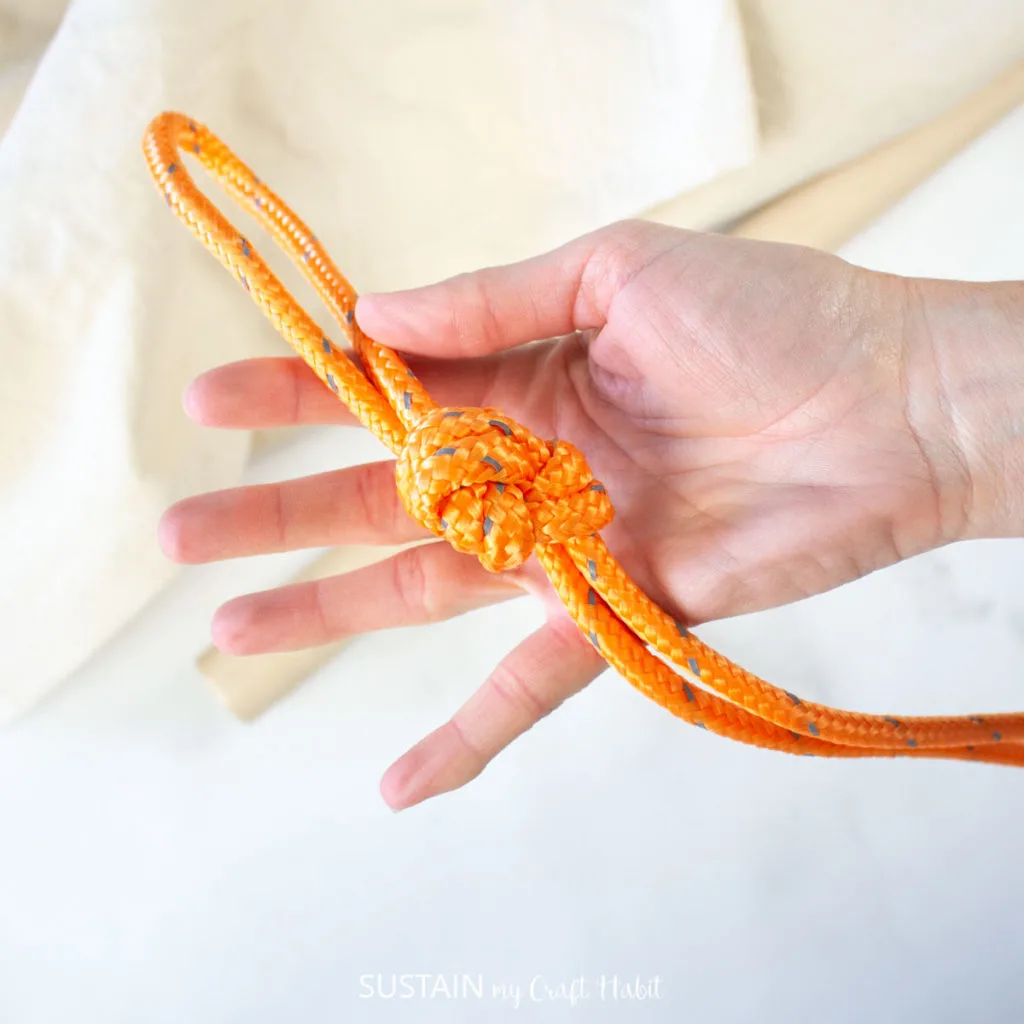
Thread the rope ends through each of the wooden dowels closest to the center. Knot the rope underneath the holes.
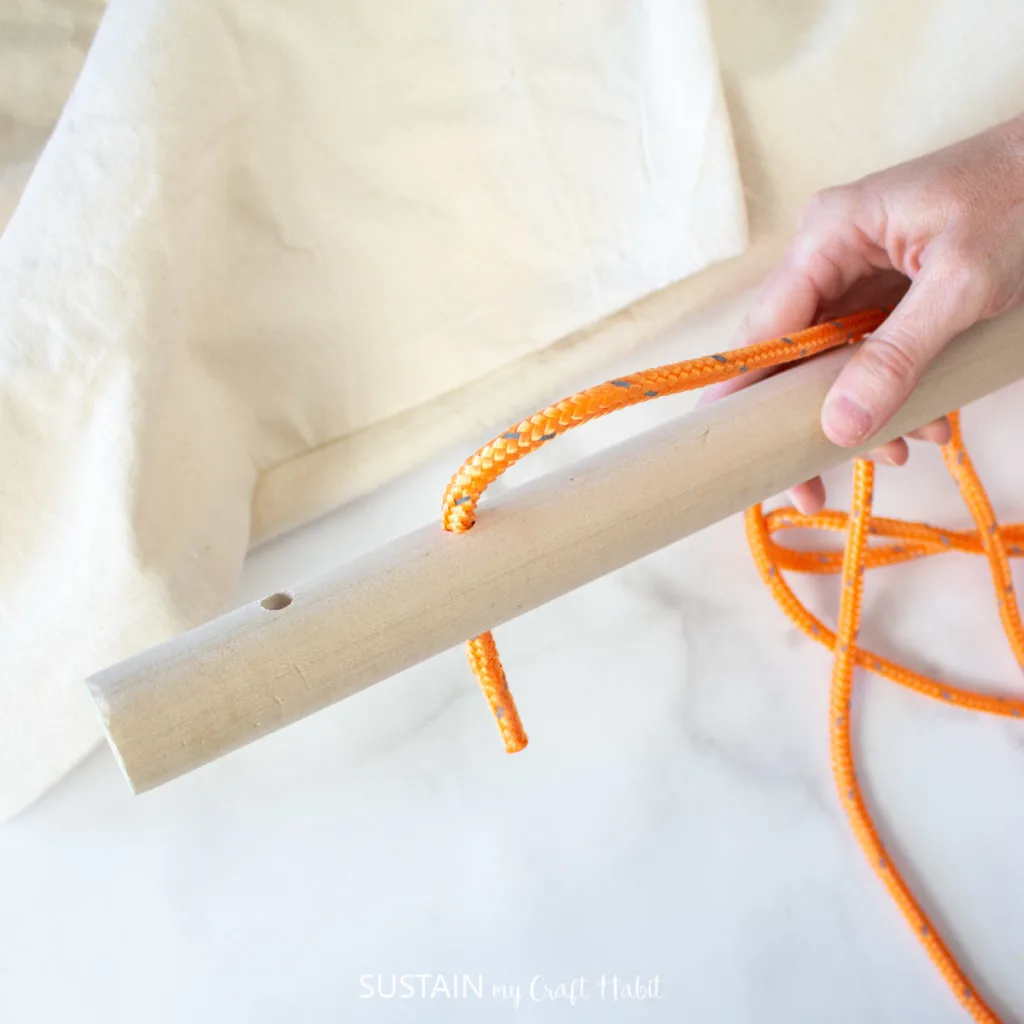
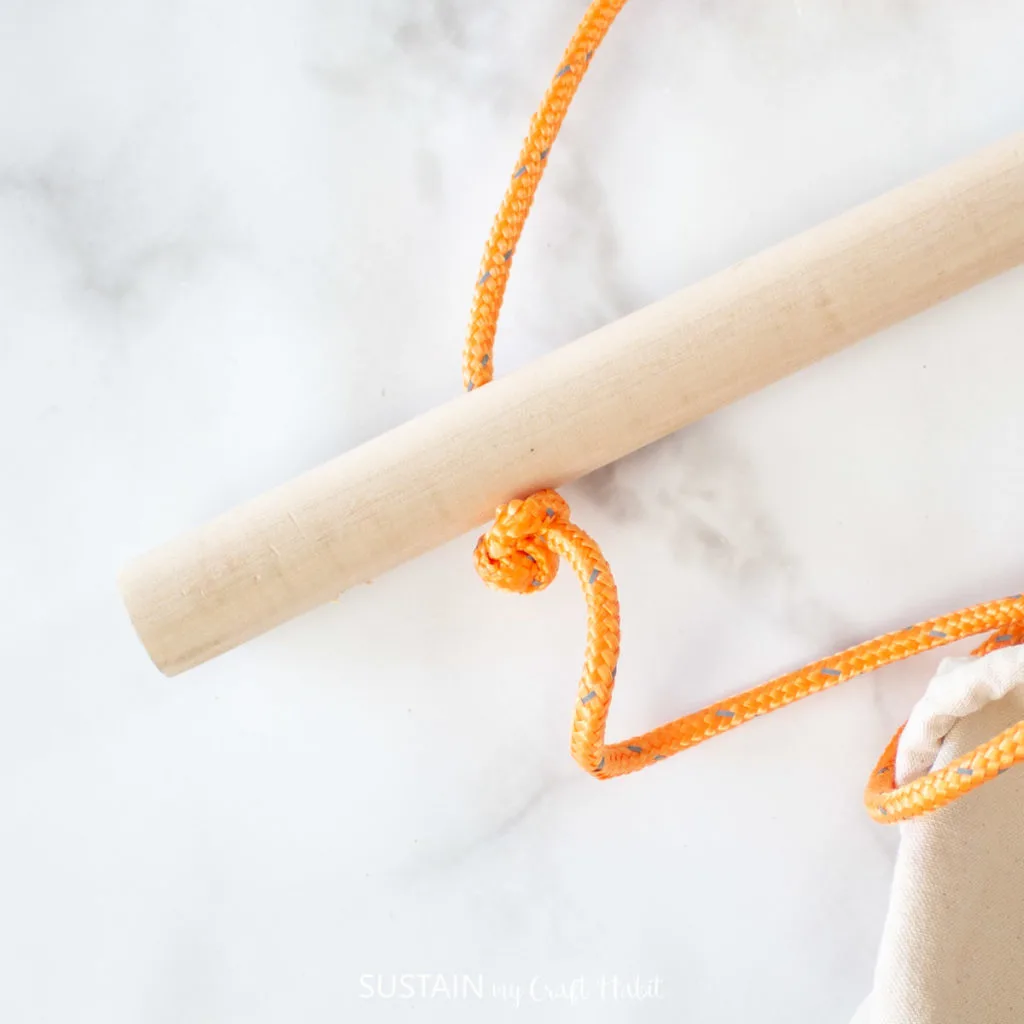
Continue threading the rope through the channels in the canvas, starting at the shorter end of the chair. Add a safety pin to the ends of the rope to help thread through the channel.
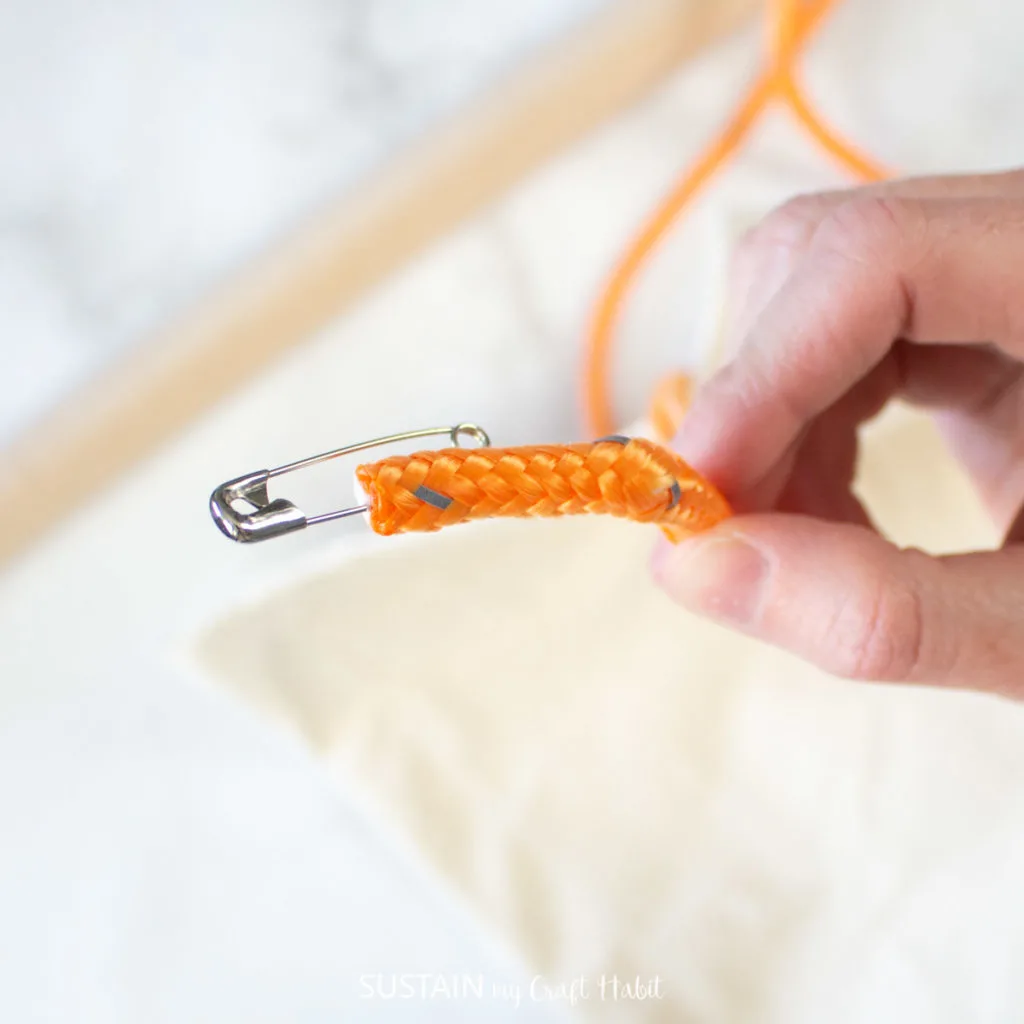
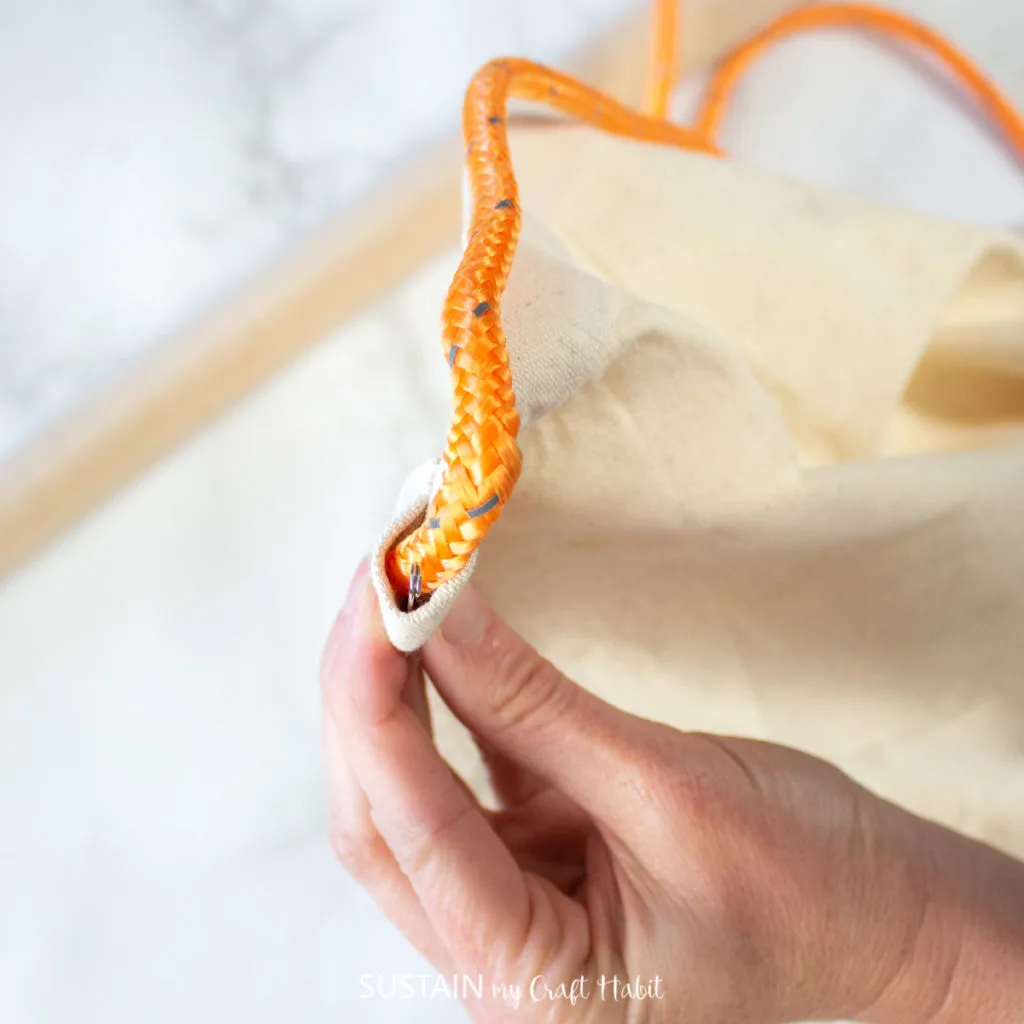
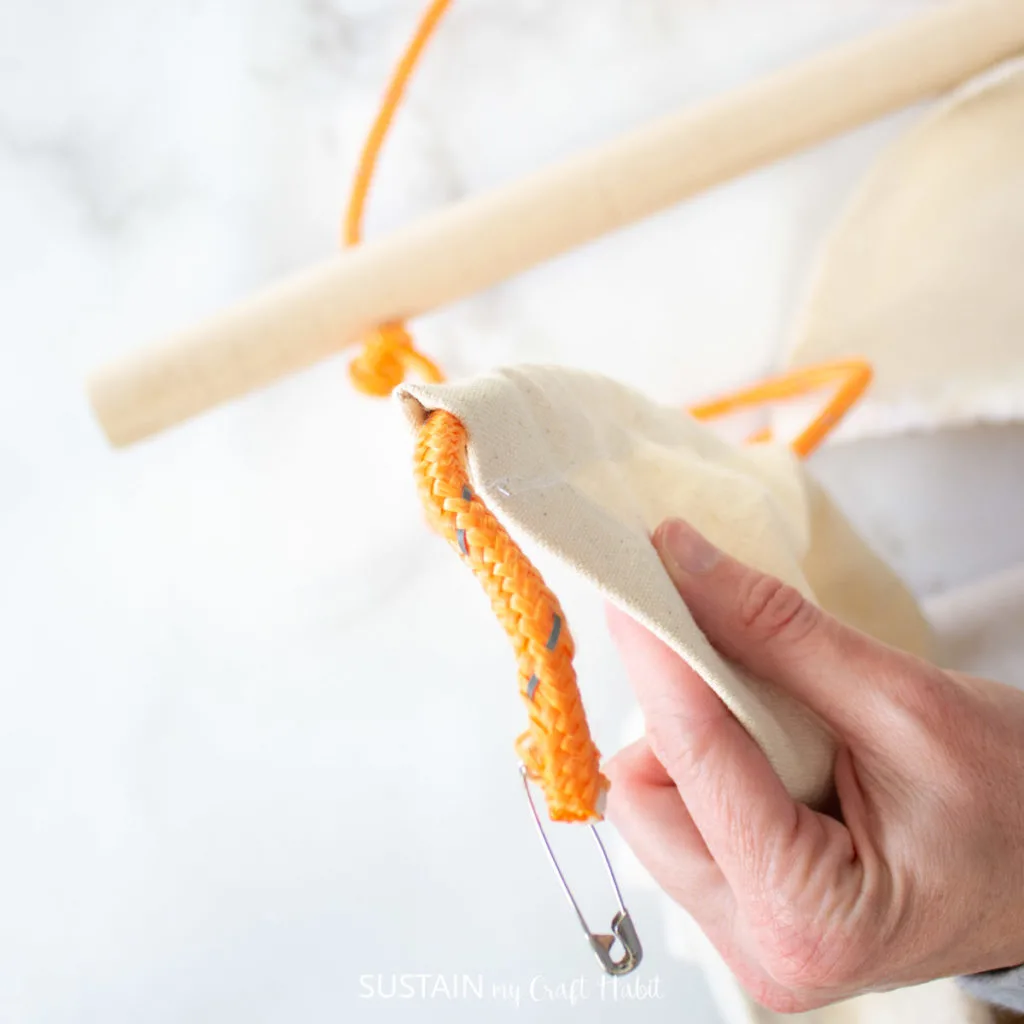
Once through the channel, thread the ends through the remaining holes on the wooden dowel in the opposite direction. Knot the ends securely to hold the hammock together.
Hang the chair to be sure the lengths of the rope are ok. Once the lengths are good and balanced, cut the ends of the rope above the knot and melt them so they won’t fray.
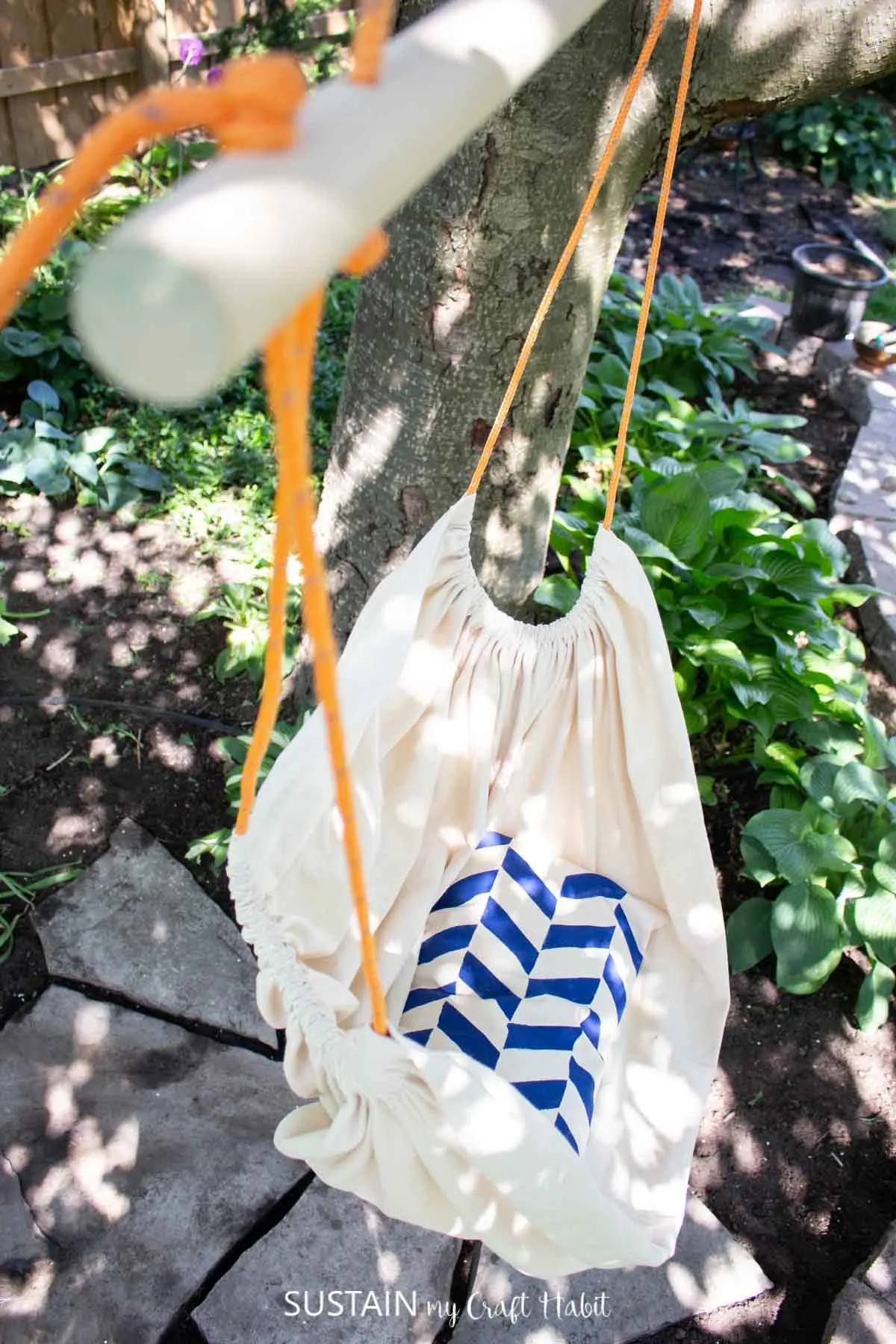
Fastening the Hammock Chair
Wrap the chain around a sturdy branch and connect the ends with a quick link. Clip the security snap through the center loop of the hammock and then clip it to the quick link. And until I can cut the long chain shorter with bolt cutters, I’ve wrapped the chain around the tree limb several times.
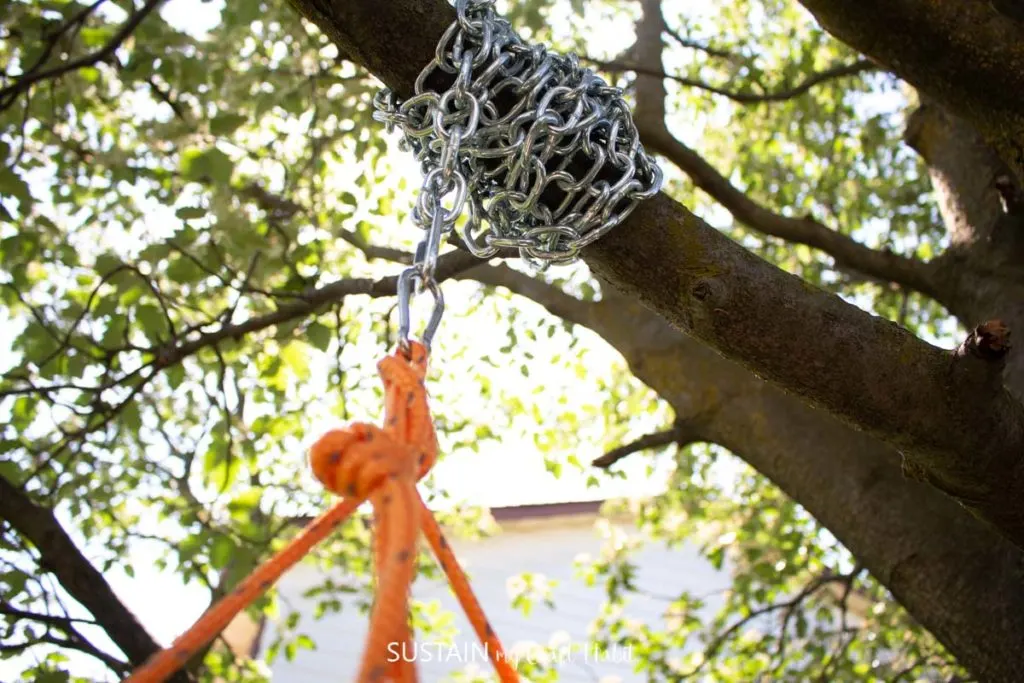
Adjust the gathers in the canvas so both sides are the same and well balanced. Add the seat cushion and enjoy!
Where will you hang your cozy canvas hammock chair?
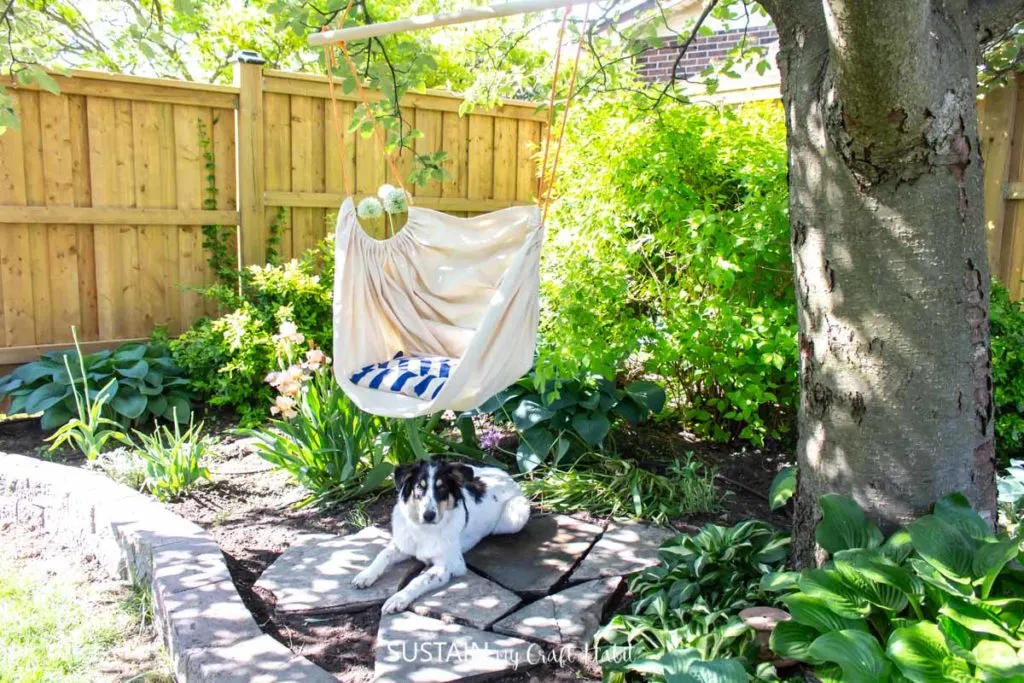
More Easy Sewing Projects for the Home
Over the years, we’ve made so many practical sewing projects for the home. Things like these fabric storage cubes, this student chair organizer and a hanging toy organizer. For the free sewing patterns and tutorial, check out any of these posts below.
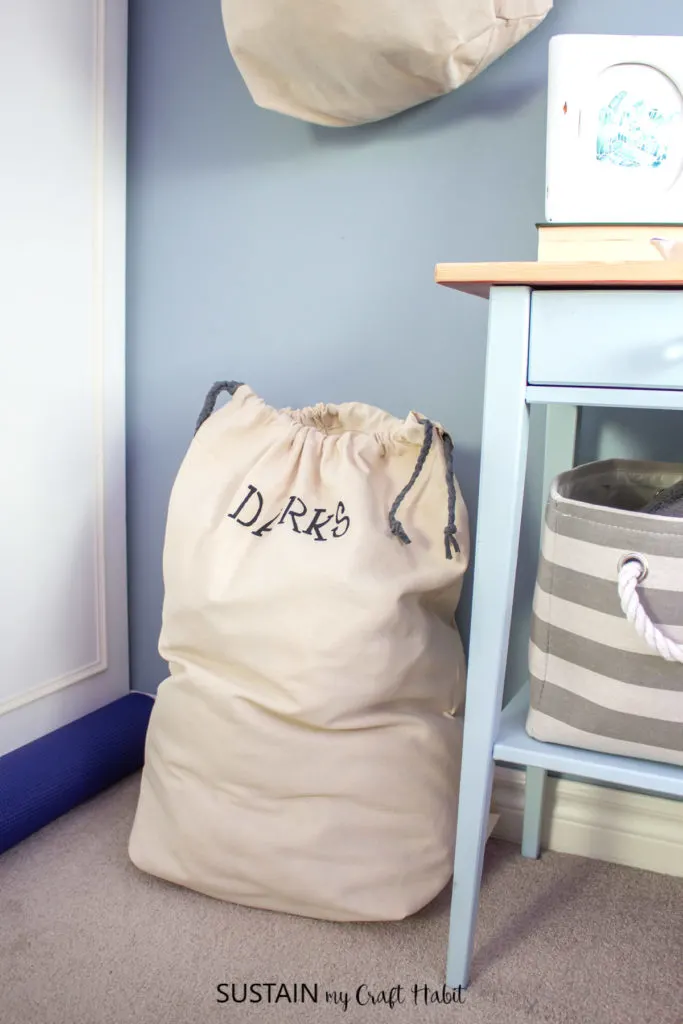
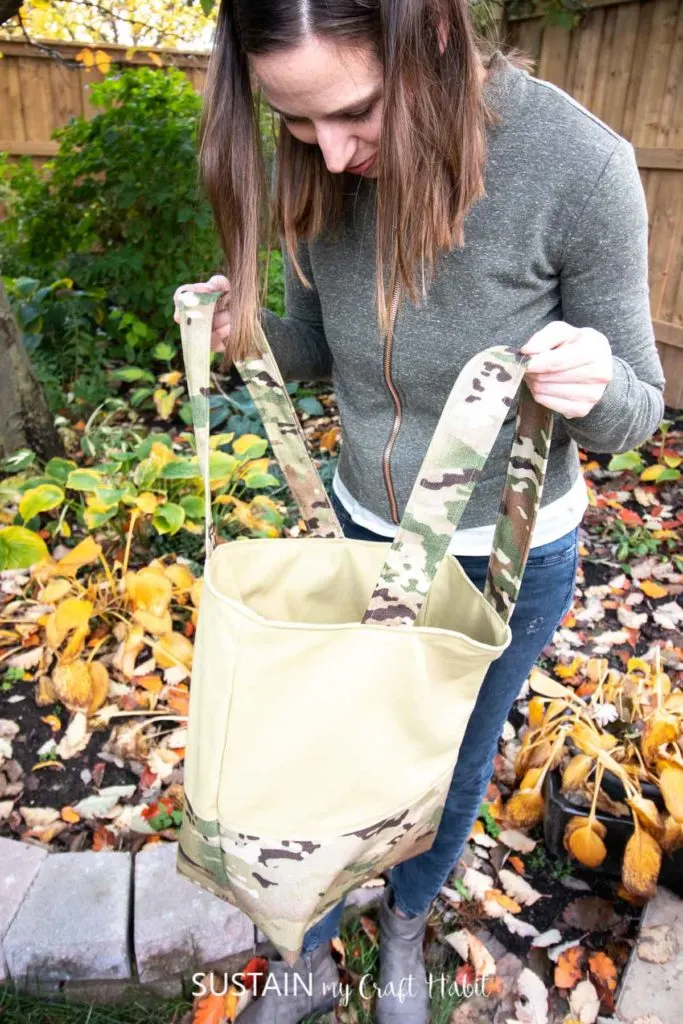
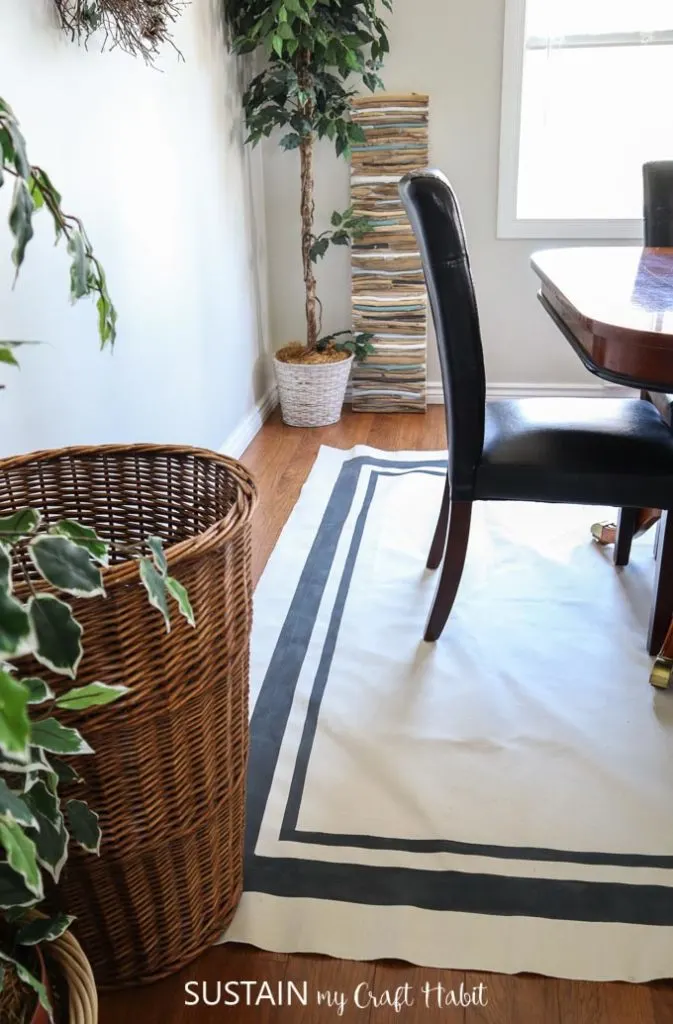
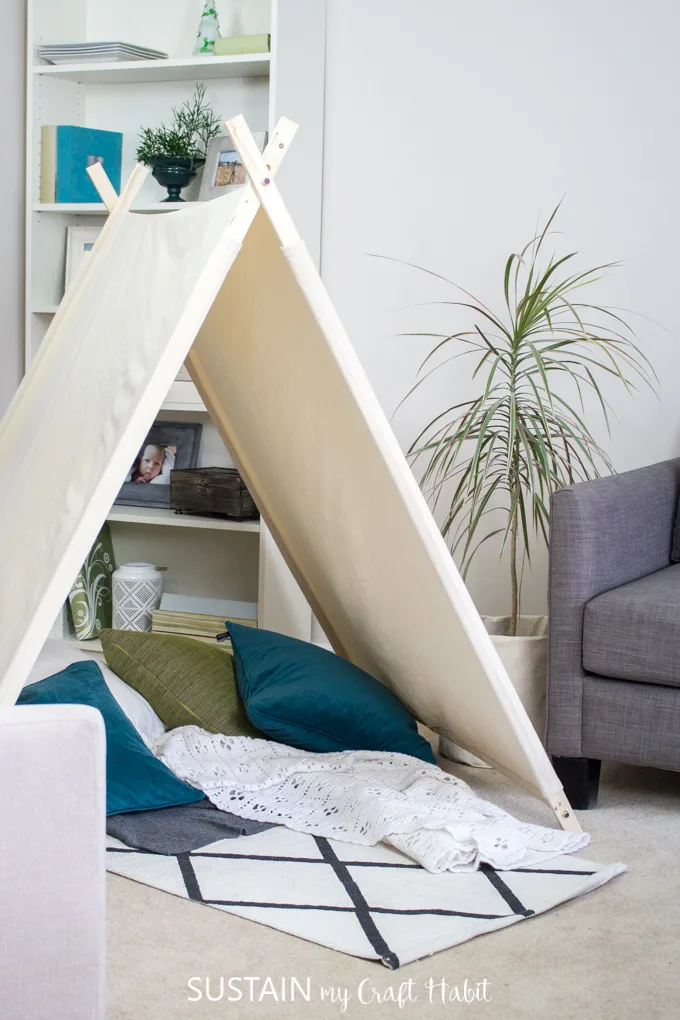
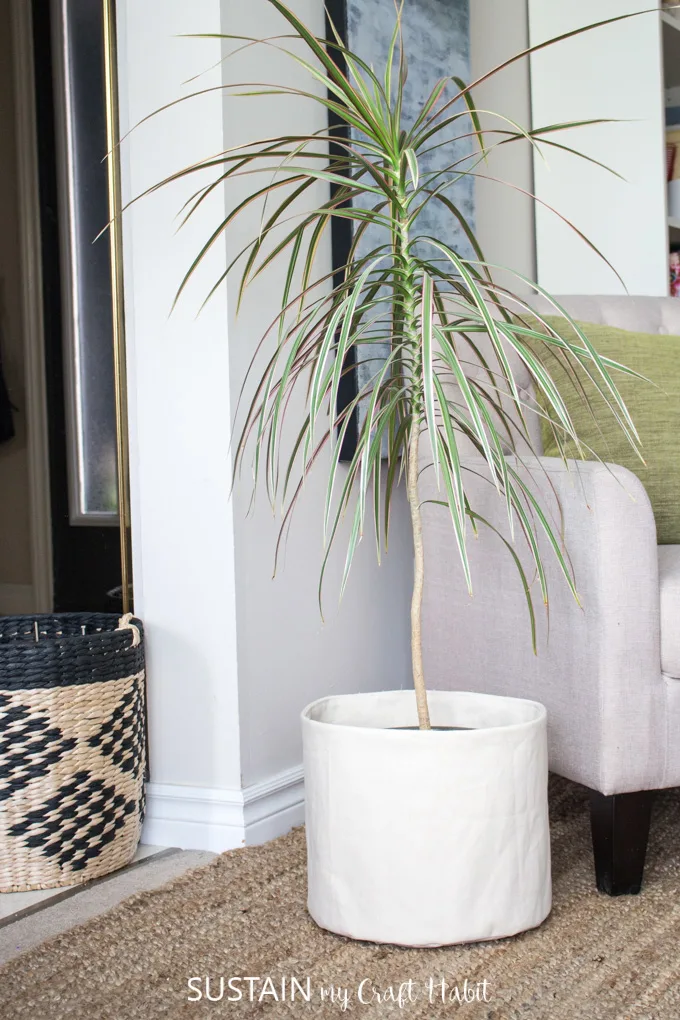
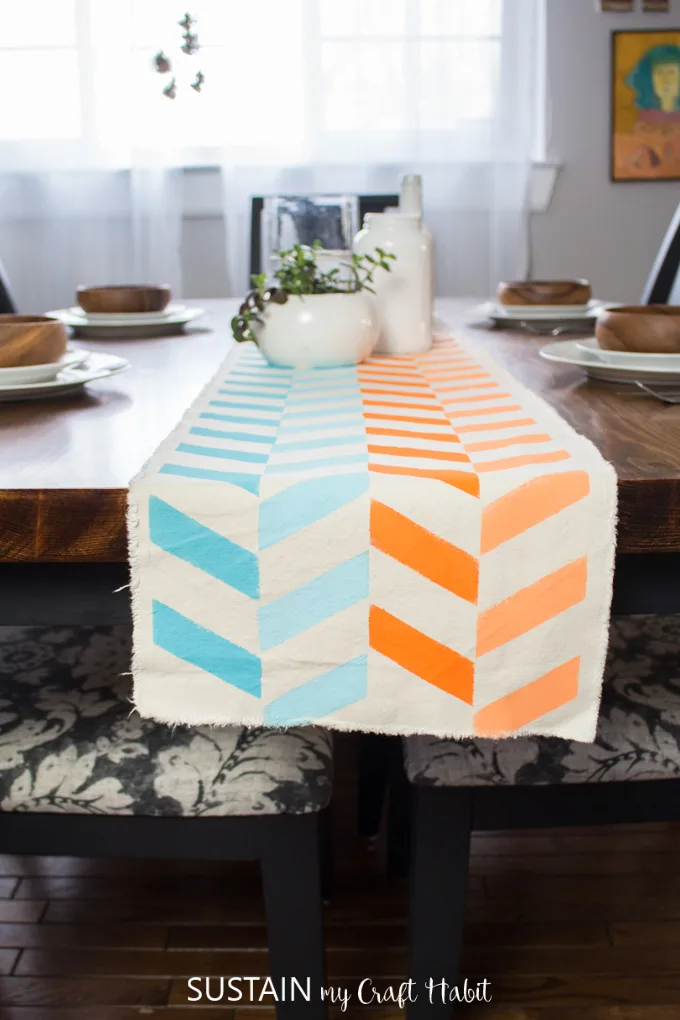

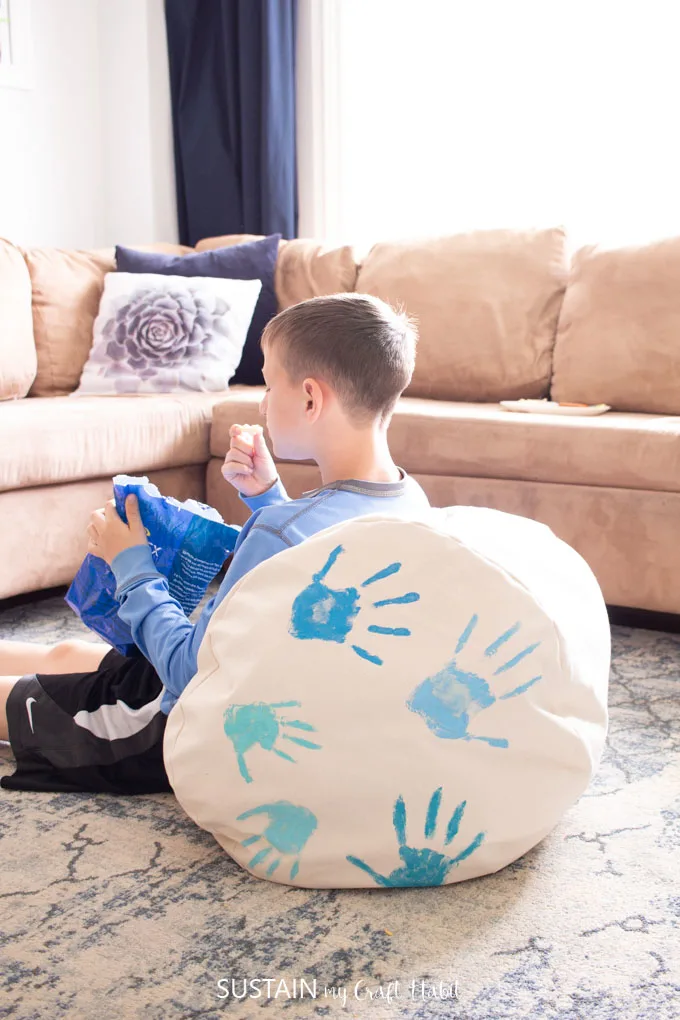
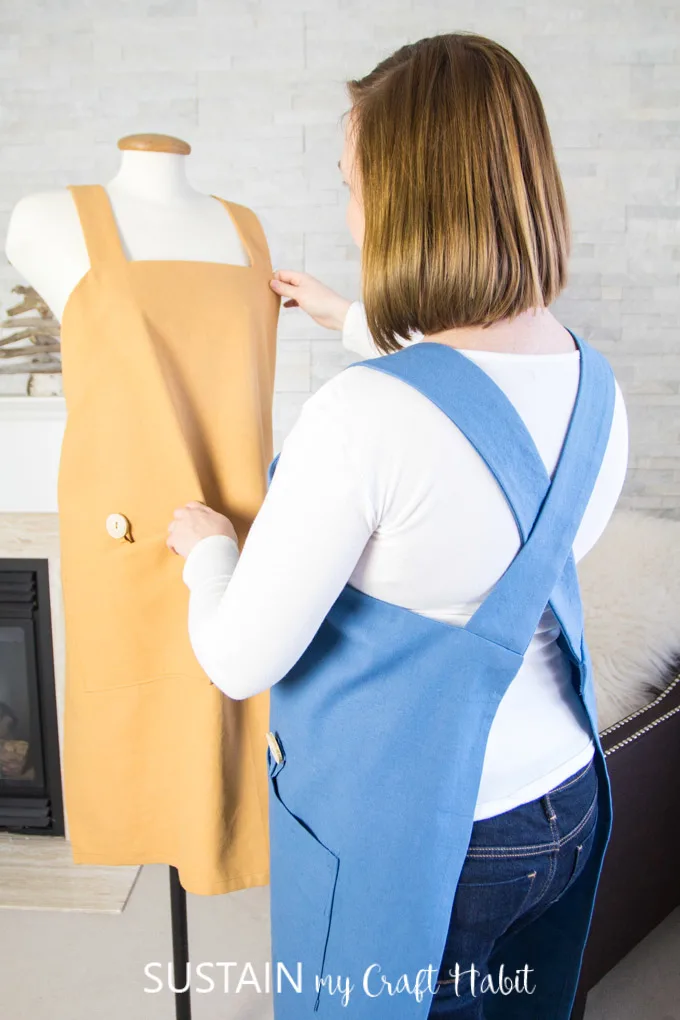
Like it? Pin it for later!
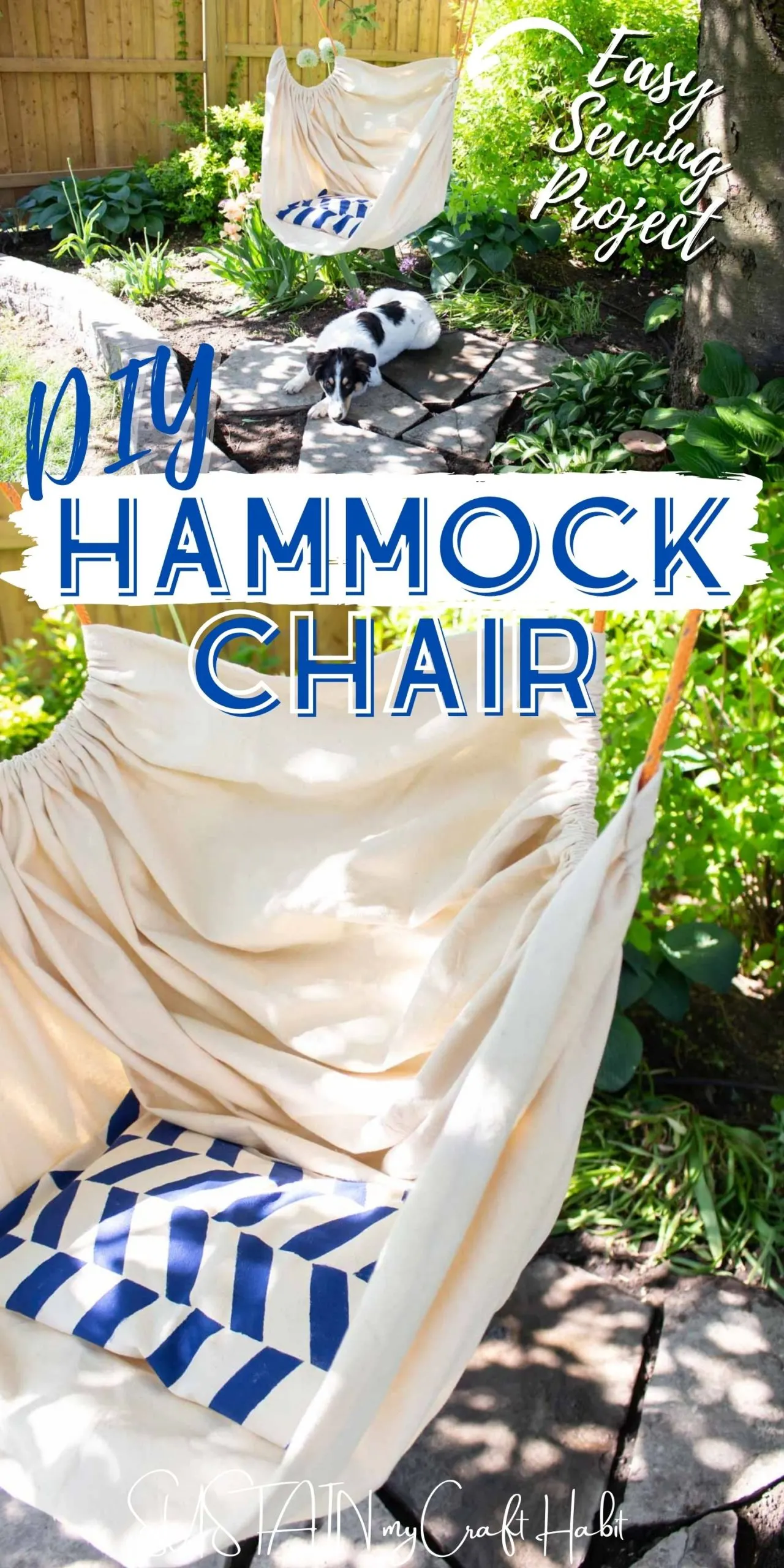
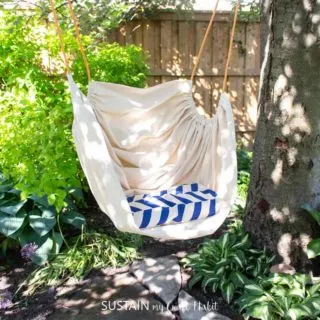
DIY Fabric Hammock Chair
Materials
- 2 yards 100% Cotton canvas 10oz, 60” wide, in natural color
- Hardwood dowel 1 ¼” wide x 3’ long (such as oak)
- Braided Polypropylene ⅜” thick x 18’ long, any color (with 244 lb working load limit)
- 2”x3/16” Stainless Steel Spring Loaded Security Snap
- 2”x3/16” Stainless Steel Quick Link with 3/16” zinc plated passing link chain with 450 lb safe work load
- Drill Press and drill bit 3/8”
- Sewing machine and matching thread pins
- Iron and ironing board
- Fabric Scissors
- Measuring Tape Ruler/ Yardstick, chalk or wax
- Large safety pin
For seat cushion (optional):
- 10×14” Pillow form
- Fabric paint any color and paintbrush
- ZigZag Stencil
Instructions
Preparing the Wooden Dowel
- Measure and mark 2” and 4” from both ends.
Preparing the Canvas Fabric
- Fold the canvas fabric in half with selvage edges aligned. On one end of the fabric, measure and mark 13” from the folded edge. And then on the other end, measure and mark 28” from the folded edge.
- Using a long yardstick, draw a line using chalk or removable wax connecting the marked spots. Cut along the marked line to create a trapezoid shape when fabric is unfolded.
- Finish the straight edges of the cut fabric (the short side is the top and the long end is the bottom of the hammock chair). Fold edges in 1/2” and press. Fold again another 1/2” and press, then stitch the hem in place.
- Along the diagonal cut lines, fold edges in ½” and press. Fold again another 1 1/8” and press. Pin along the folds to hold in place while sewing. Tuck in the extra bulk on the ends where the edges don’t align.
- Stitch the hem in place forming a wide channel for the rope to be threaded through.
- Add an extra triangular stitch at all 4 corners for added strength.
Making a Seat Cushion (optional)
- To cover a pillow form that measures 10”x14” in size, cut a piece of canvas that measures 12”x16”
- Using a patterned stencil, I added a zigzag pattern to the canvas.
- Once dry, fold the rectangle in half lengthwise with RIGHT sides together and stitch the short ends together. Stitch the long end together as well leaving an 8″ gap opening at the back. Turn the pillowcase right side out and insert the pillow form. Stitch the opening close.
Assembling the Hammock Chair
- Cut the rope to 18’ long.
- Fold the rope in half and tie a large knot 5” from the fold creating a large loop for hanging.
- Thread the rope ends through each of the wooden dowels closest to the center. Knot the rope underneath the holes.
- Continue threading the rope through the channels in the canvas, starting at the shorter end of the chair. Add a safety pin to the ends of the rope to help thread through the channel.
- Once through the channel, thread the ends through the remaining holes on the wooden dowel in the opposite direction. Knot the ends securely to hold the hammock together.
- Hang the chair to be sure the lengths of the rope are ok. Once the lengths are good and balanced, cut the ends of the rope above the knot and melt them so they won’t fray.
Fastening the Hammock Chair
- Wrap the chain around a sturdy branch and connect the ends with a quick link. Clip the security snap through the center loop of the hammock and then clip it to the quick link.
- Adjust the gathers in the canvas so both sides are the same and well balanced. Add the seat cushion and enjoy!

